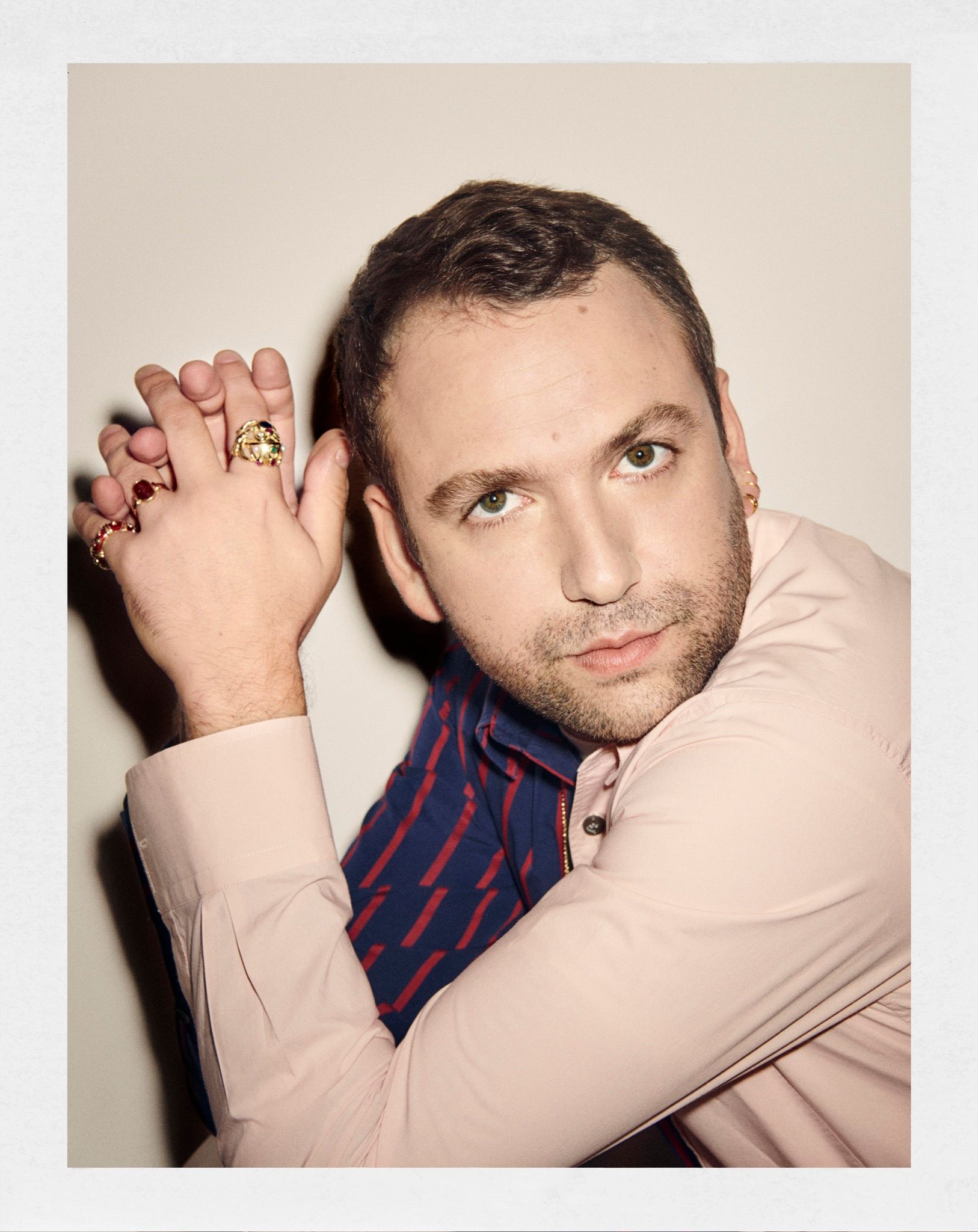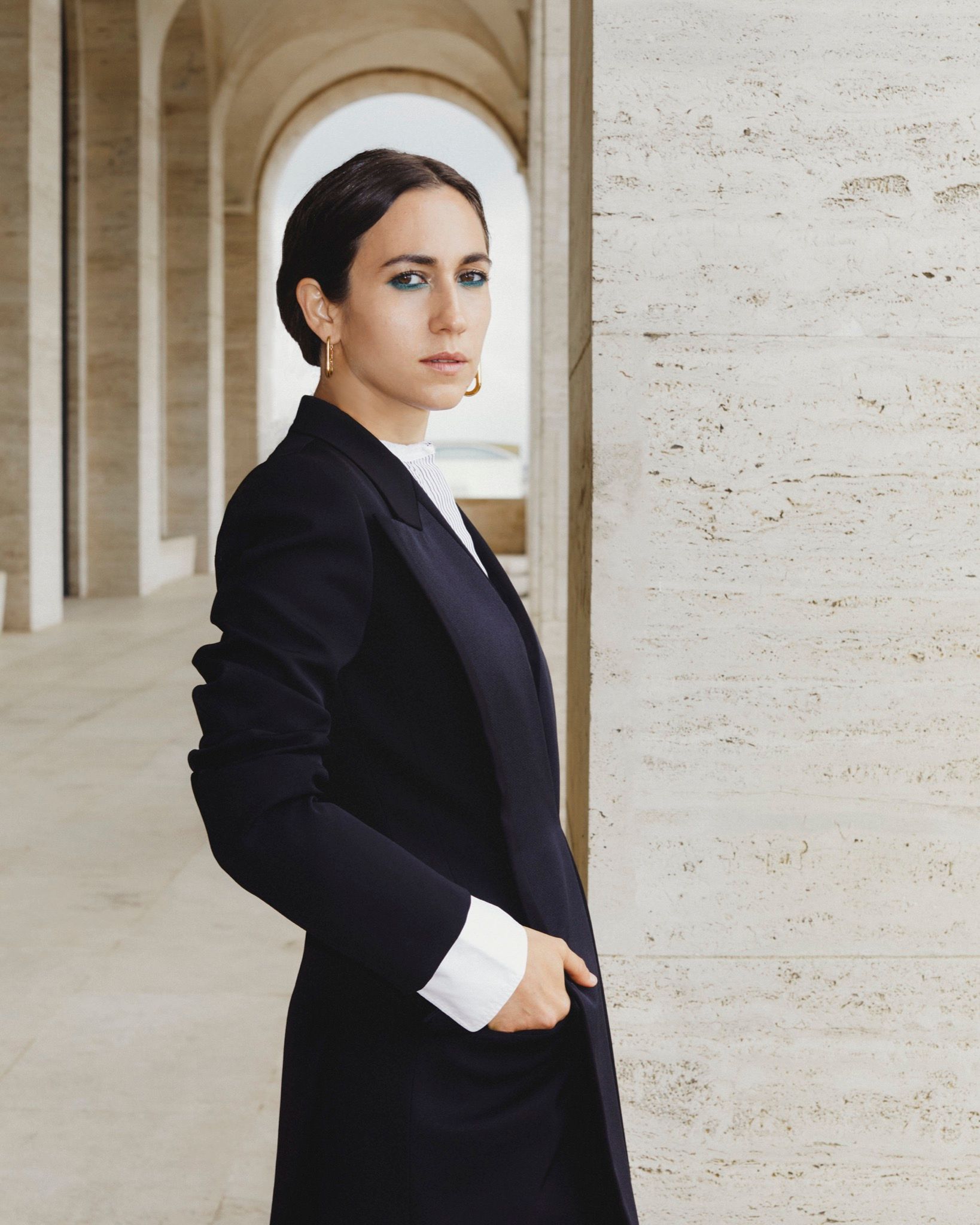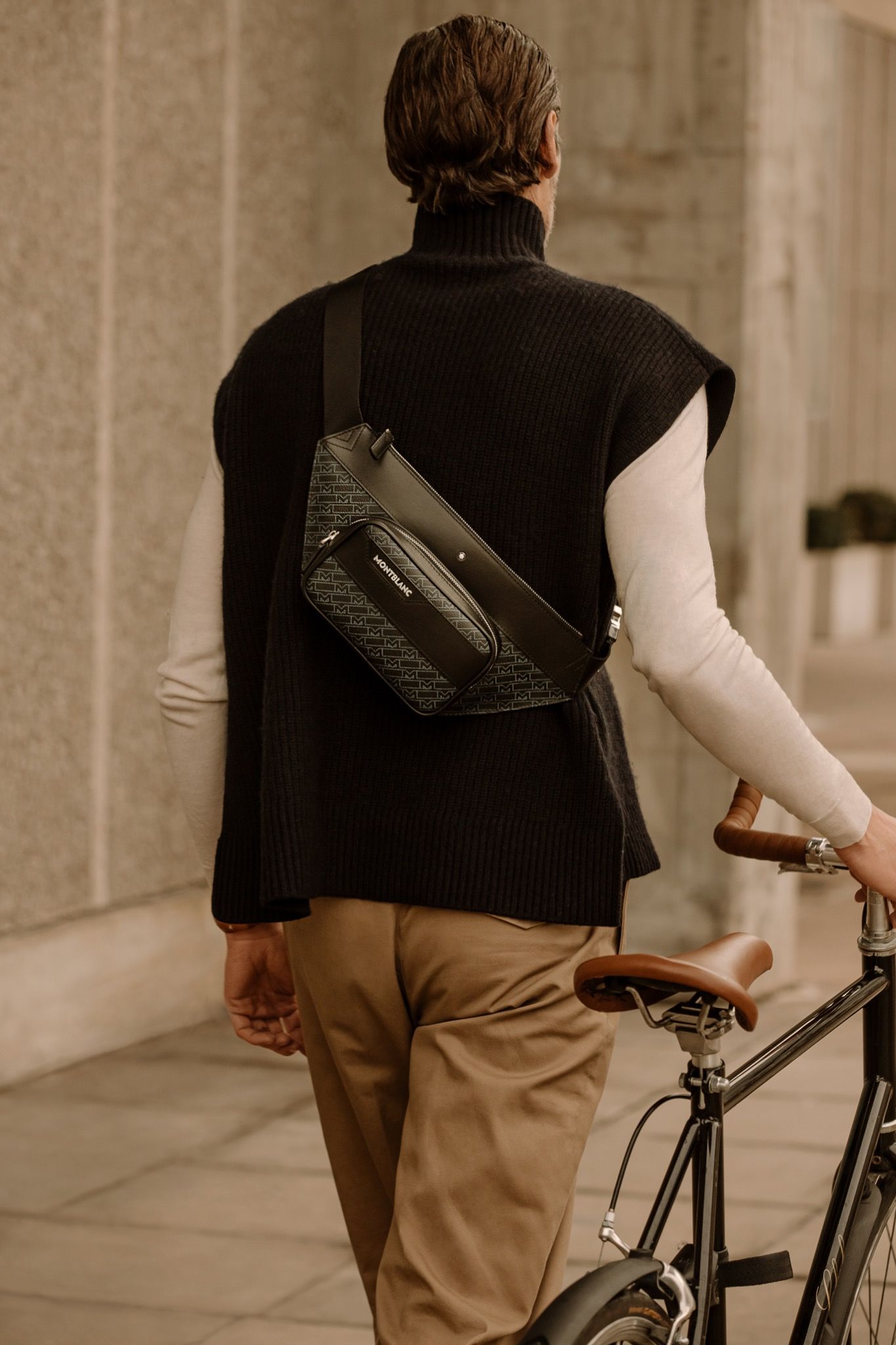It’s Been a While, Crocodile: Creative Director LOUISE TROTTER Gets to the Heart of LACOSTE
|Victoria Camblin
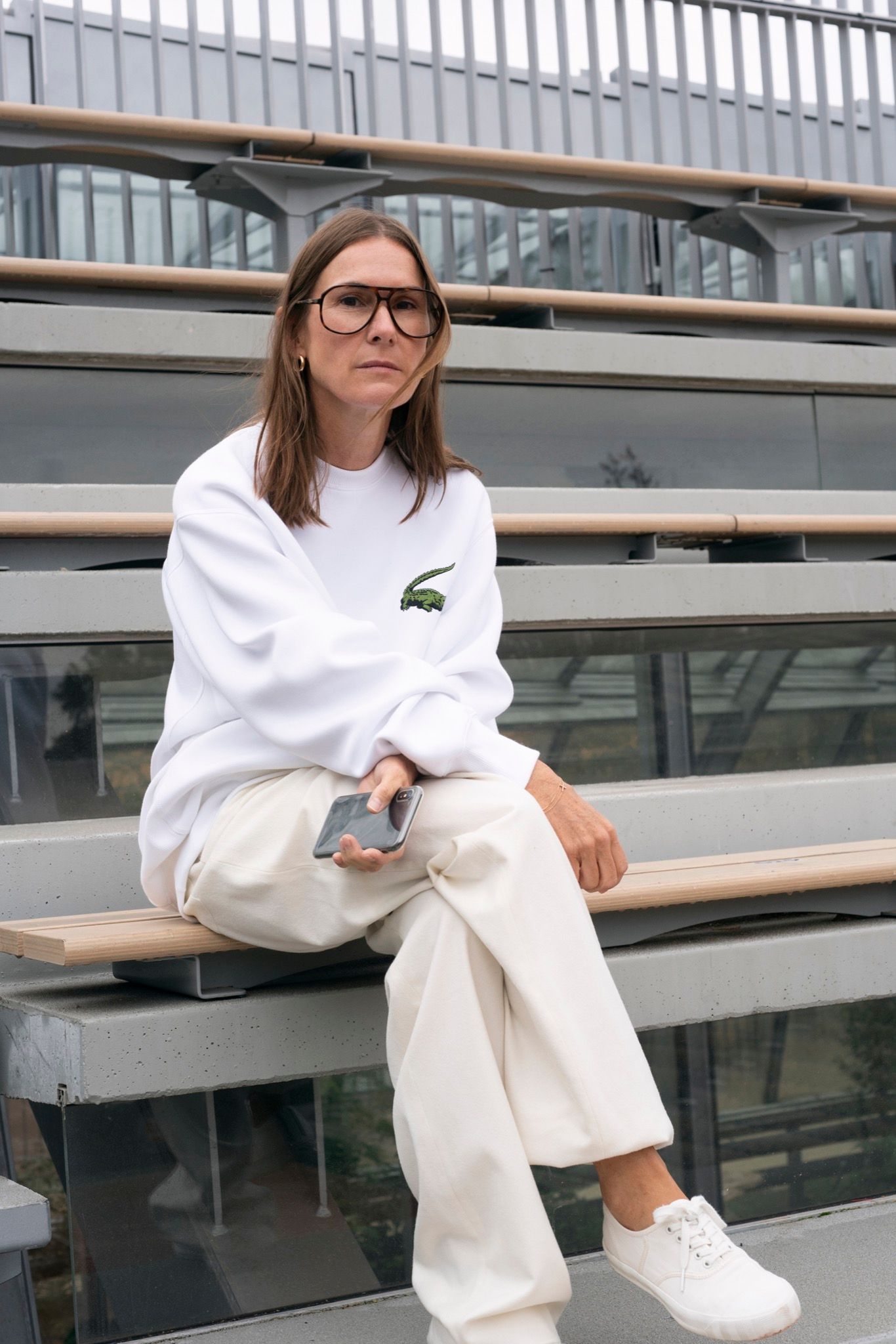
When it was announced in October 2018 that Louise Trotter would be joining Lacoste as creative director, the sportswear brand had never had a woman designer at its helm. Trotter – who attributes her tenacity, pragmatism, and fearlessness to growing up in the northeast of England – began her career at the fashionable end of the British high street, at Whistles. She has since held positions at Jigsaw and the Paris-based Joseph, which she notably introduced to the London Fashion Week runway. In the press statement announcing her appointment to Lacoste, she reflected upon the unique heritage and modernity of the then 85 year-old French company, sitting its style at a “singular” intersection of sport and fashion.
Her first collections delved into the archives of founder René Lacoste, deconstructing his spirit animal – the famous crocodile – into crocodile loafers and unraveling its green, white, and red embroidery into scaled-up flourishes on dressy tops and outerwear. The more time she spent with René’s legacy, the more she absorbed the notoriously charismatic tennis prodigy’s spirit of invention. As Lacoste consumers crawled, hungry, out of the brackish shallows of lockdown and back onto “post” Covid-19 land, Trotter’s Spring/Summer 2022 collection offered a feast of functionality and savoir-faire. Trotter attacks what I have elsewhere called the “heritage problem”– wherein newly arrived creative directors are expected to dive into a heritage label’s archive and roll out historical monograms reinvigorated by a rhetoric of the “new” – with humor. Her latest presentation suggested an alternative, replacing novelty with a response to our times – and reflecting on the significance of time itself.
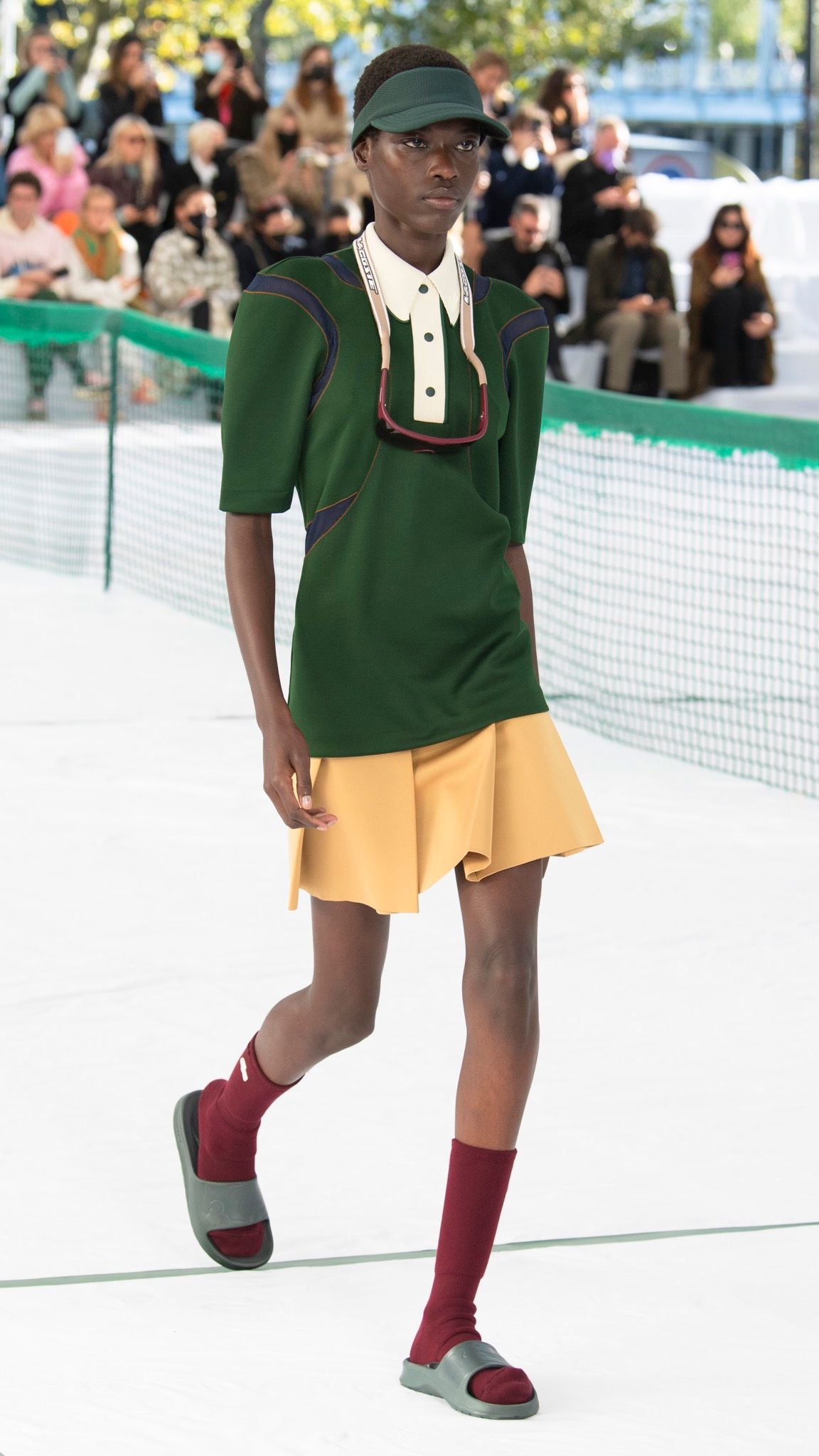
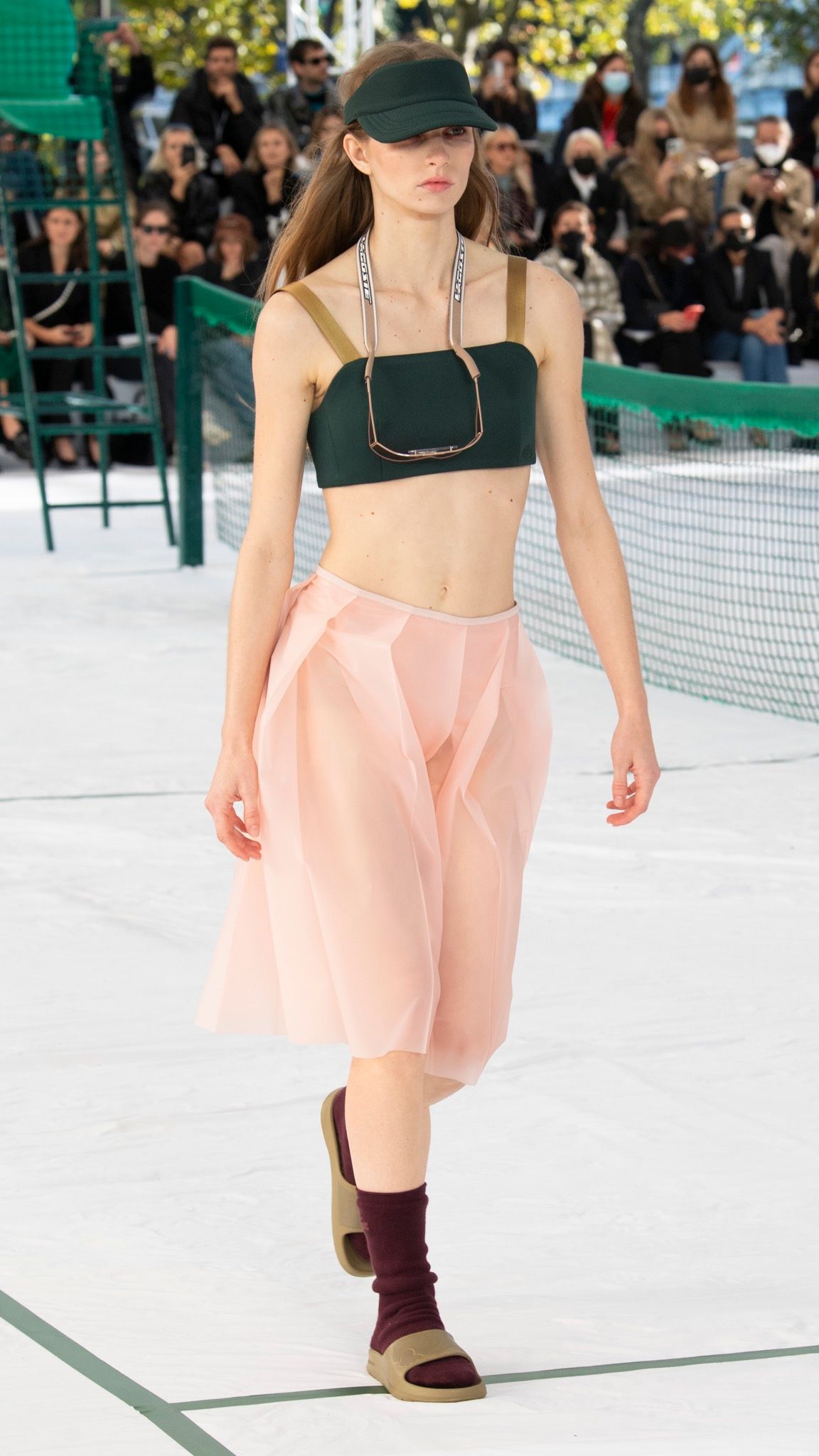
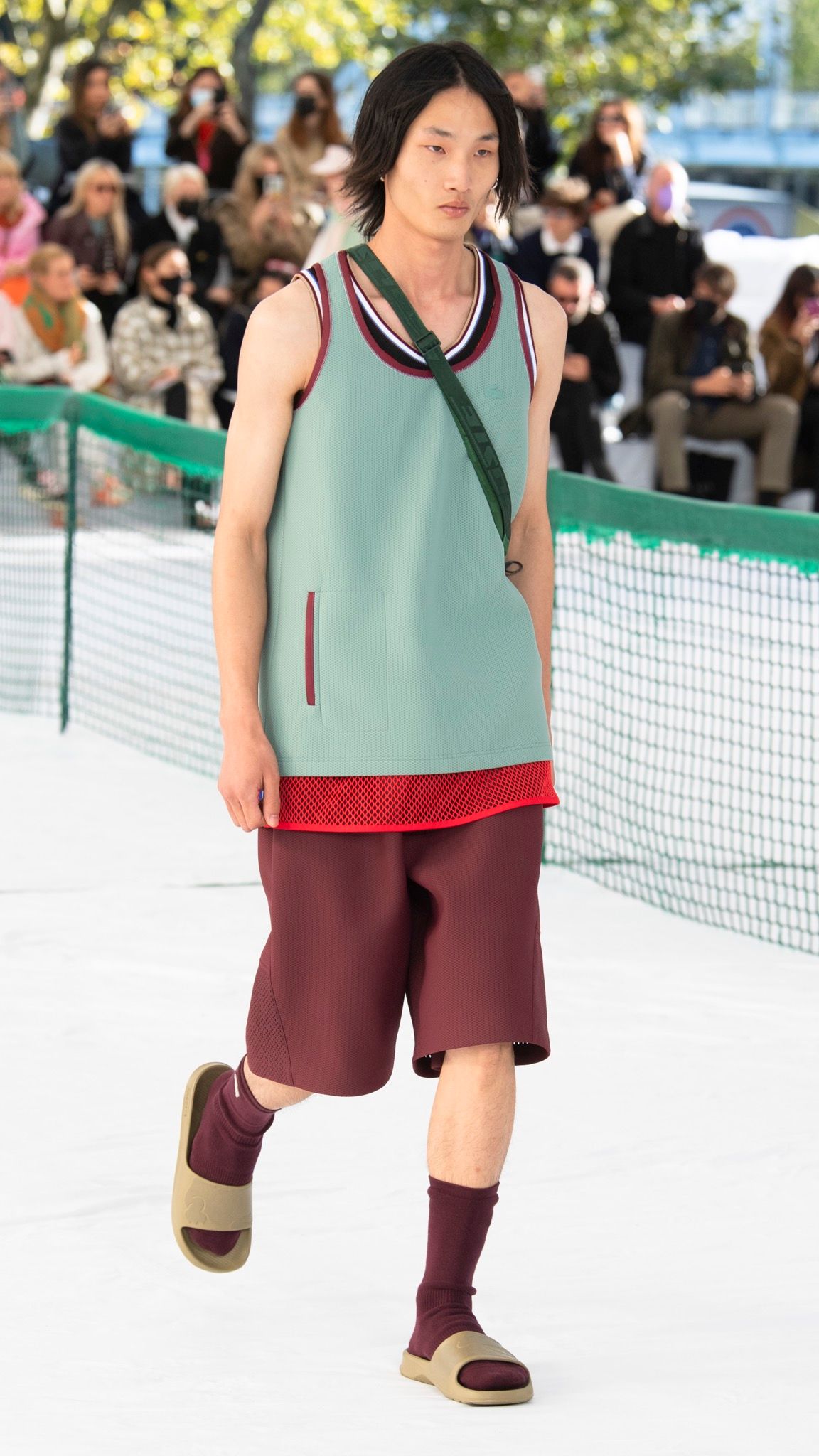
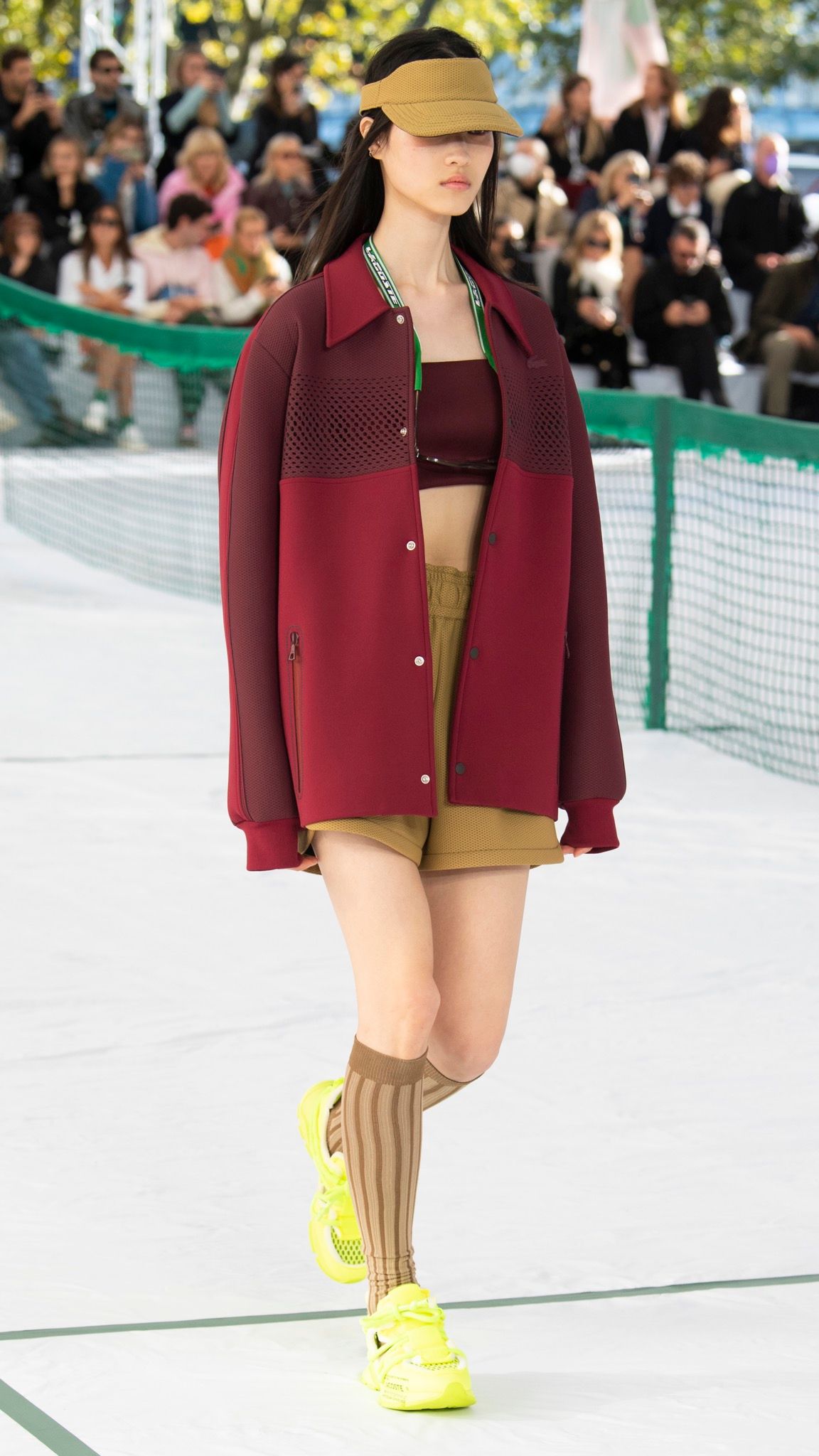
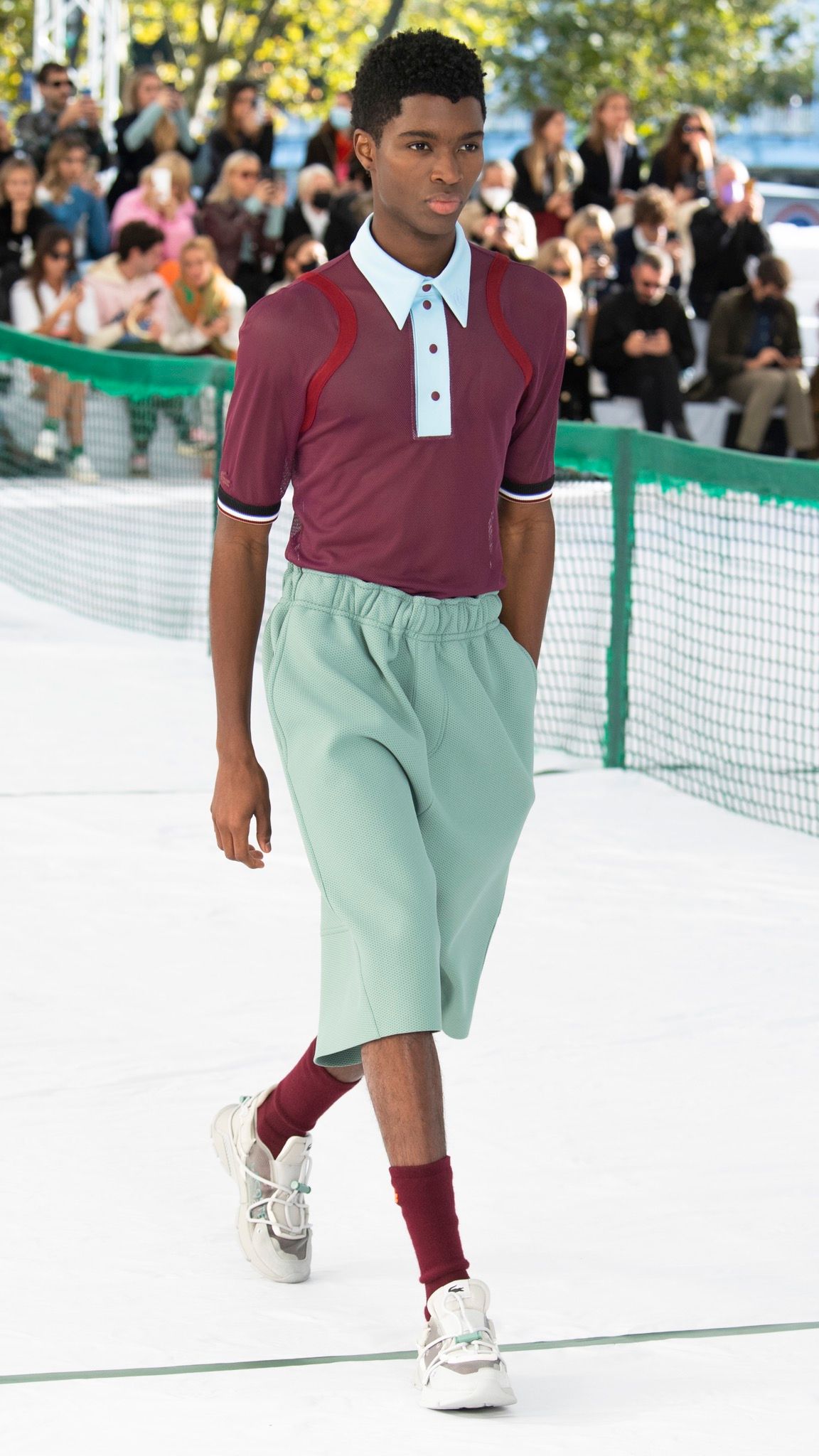
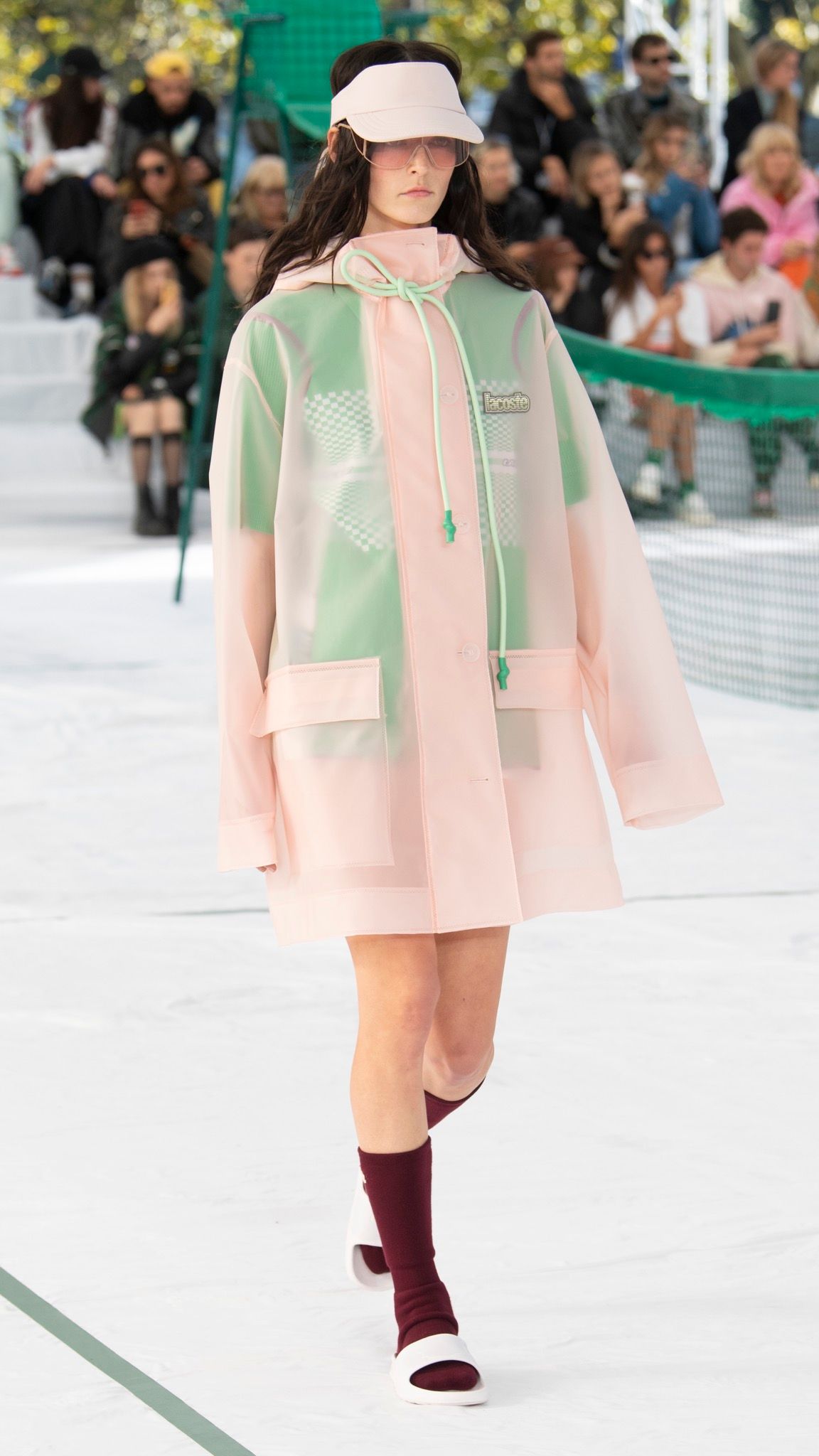
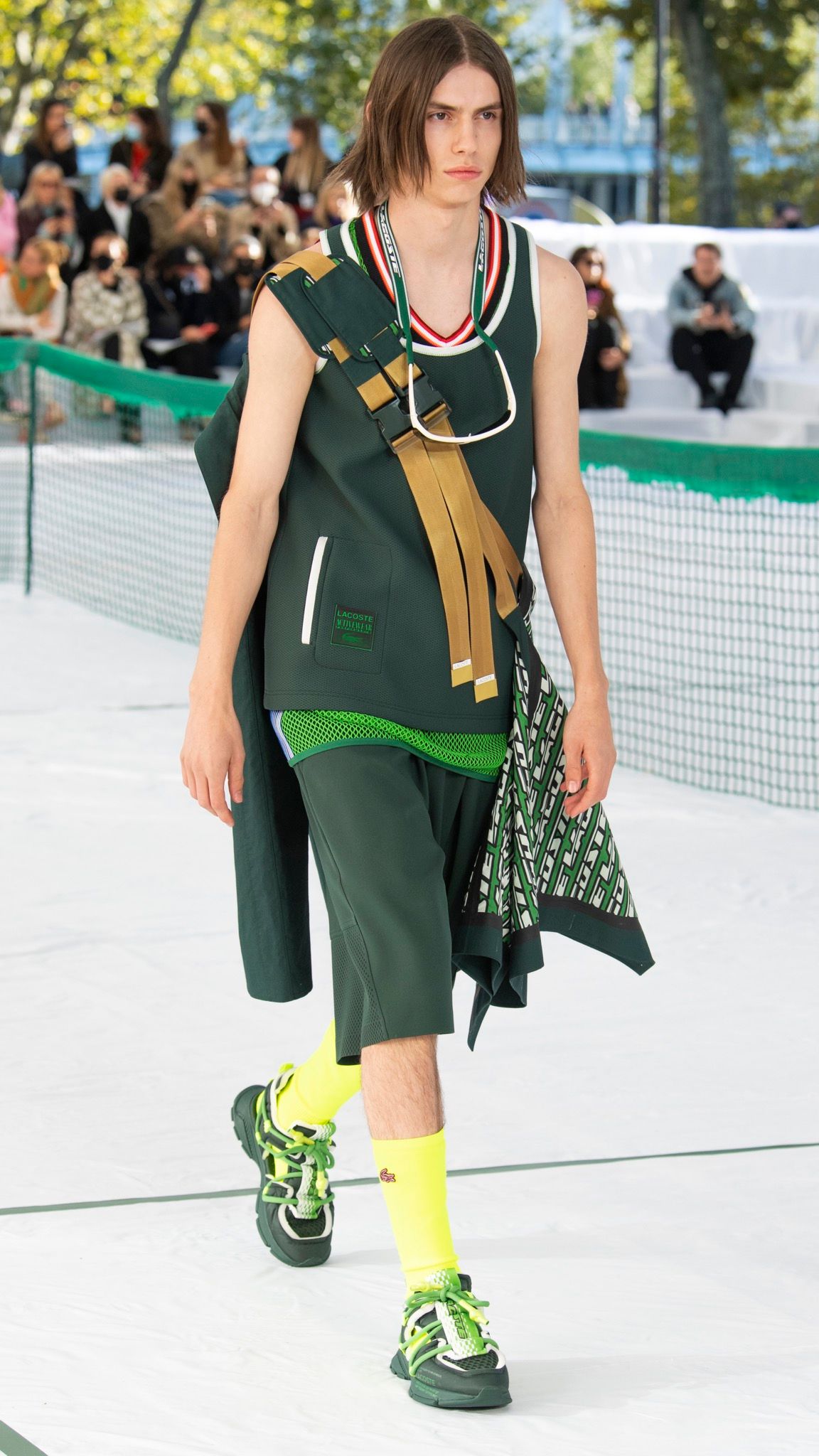
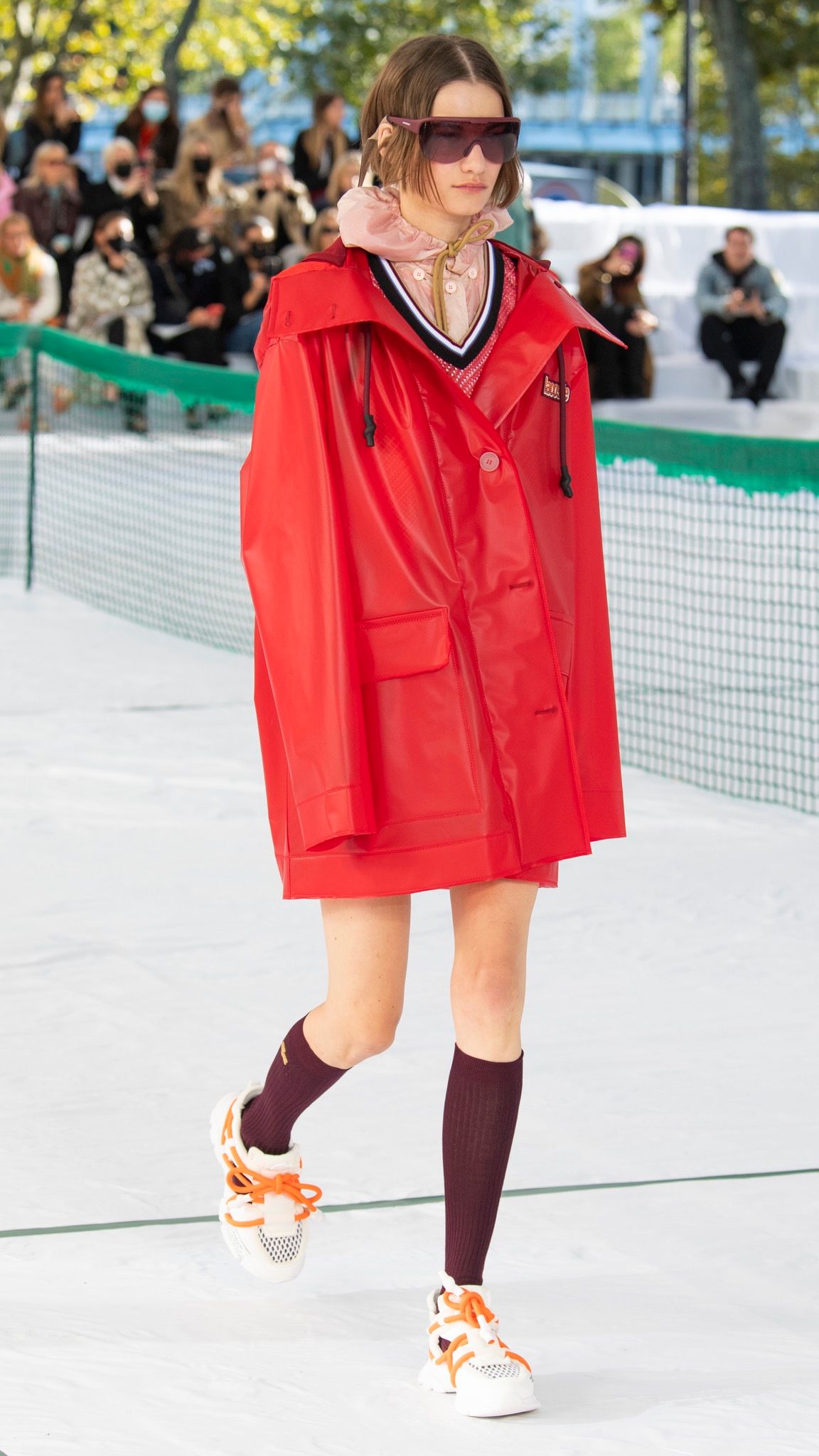
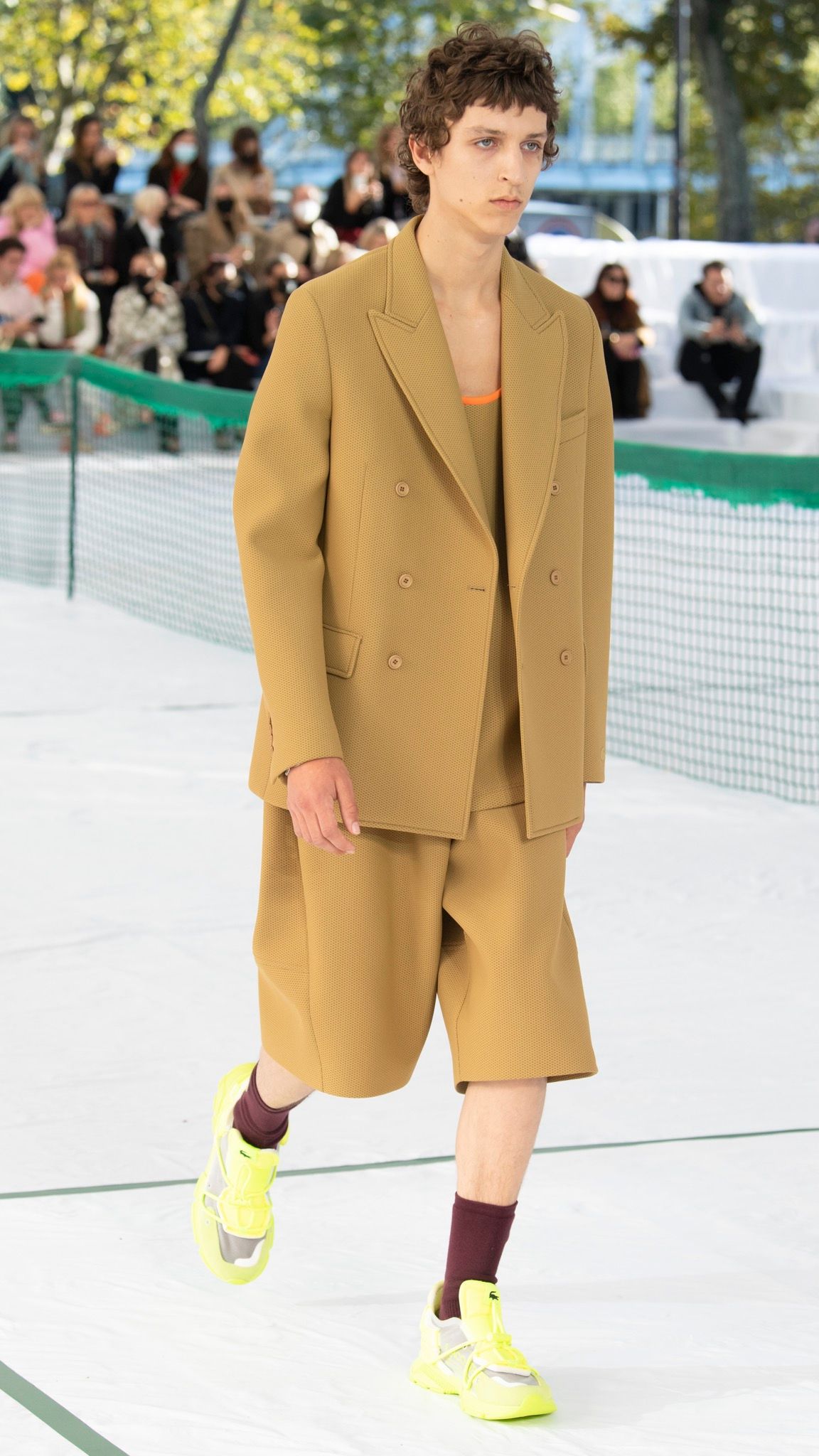
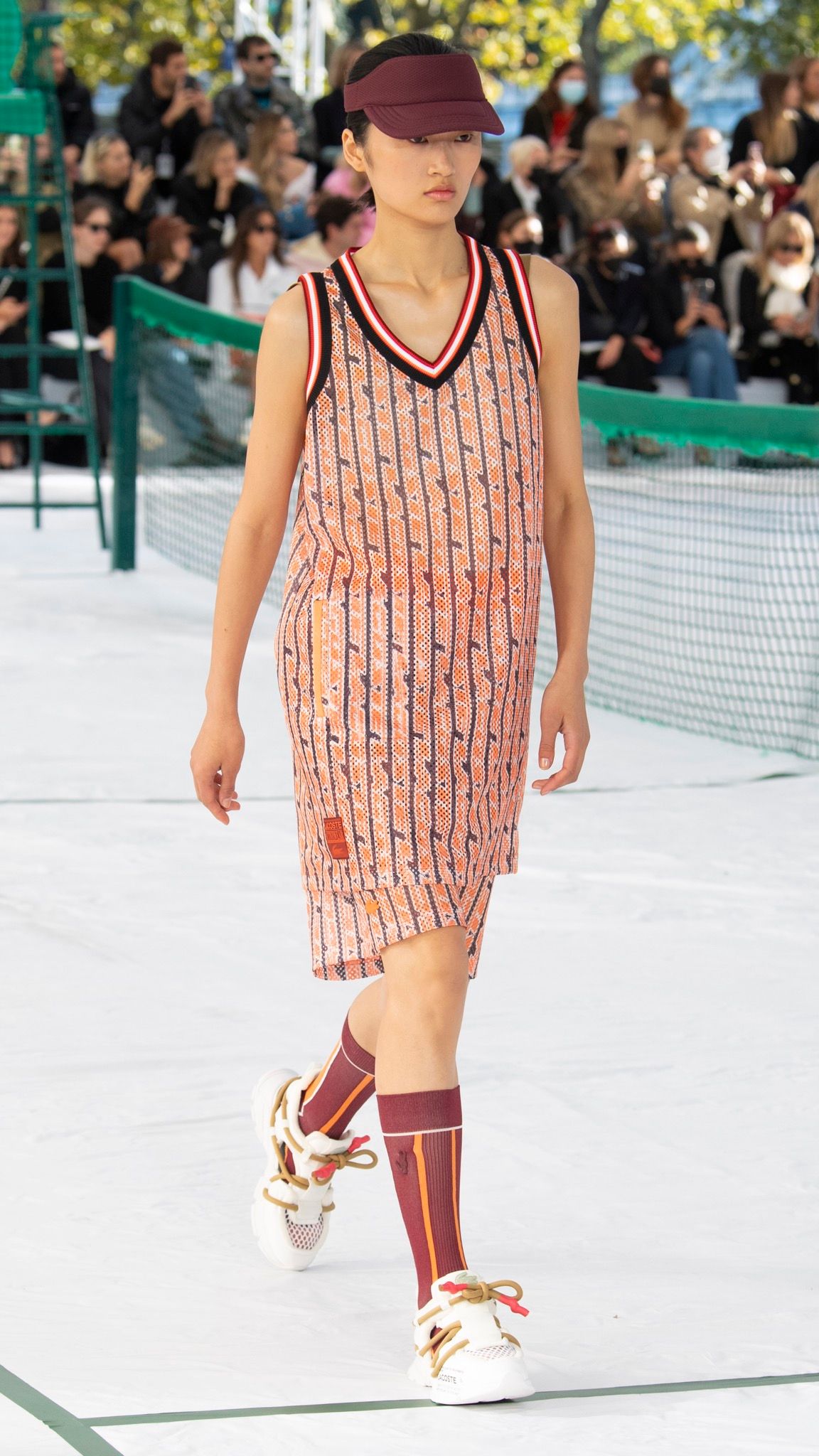
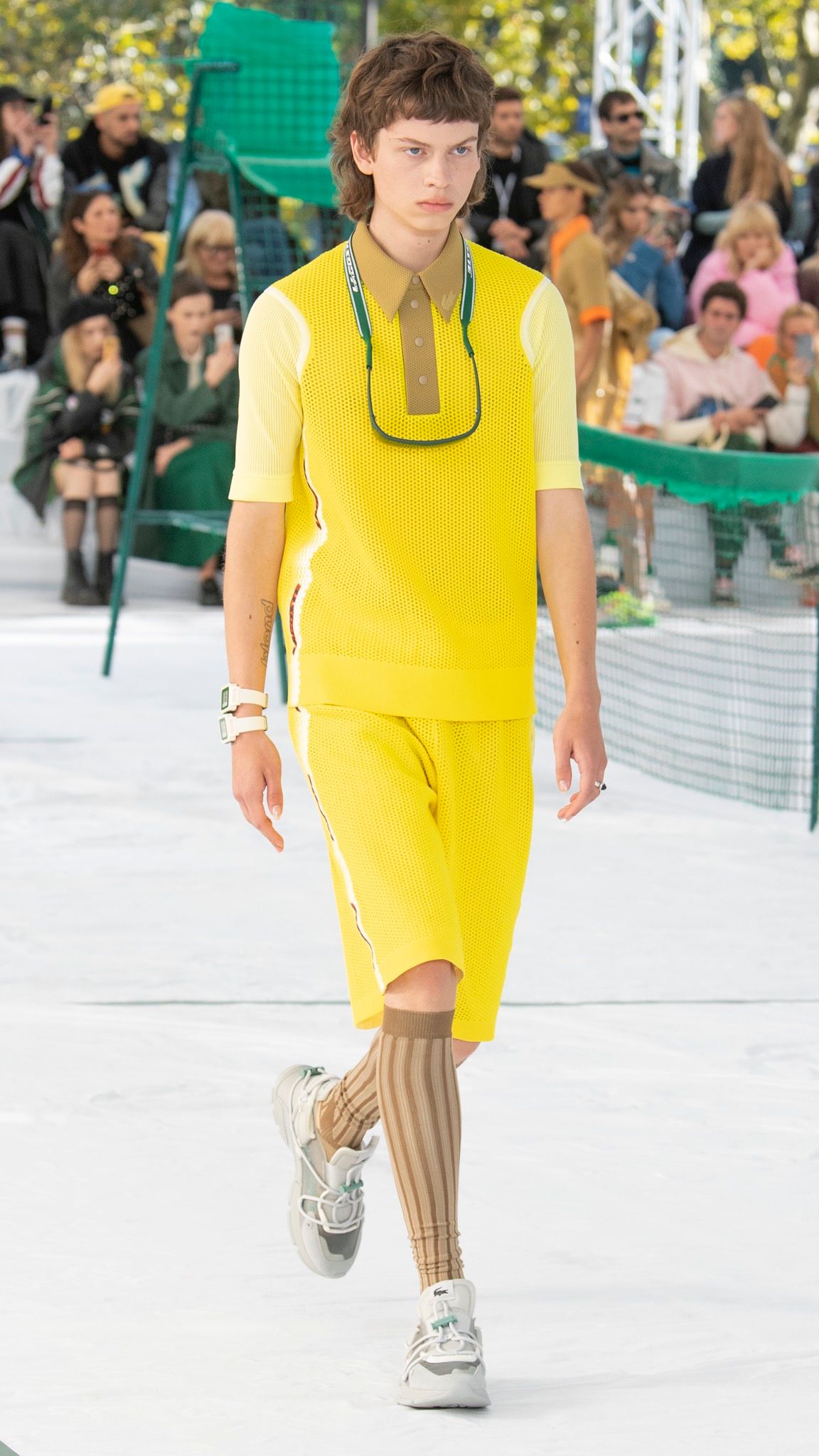
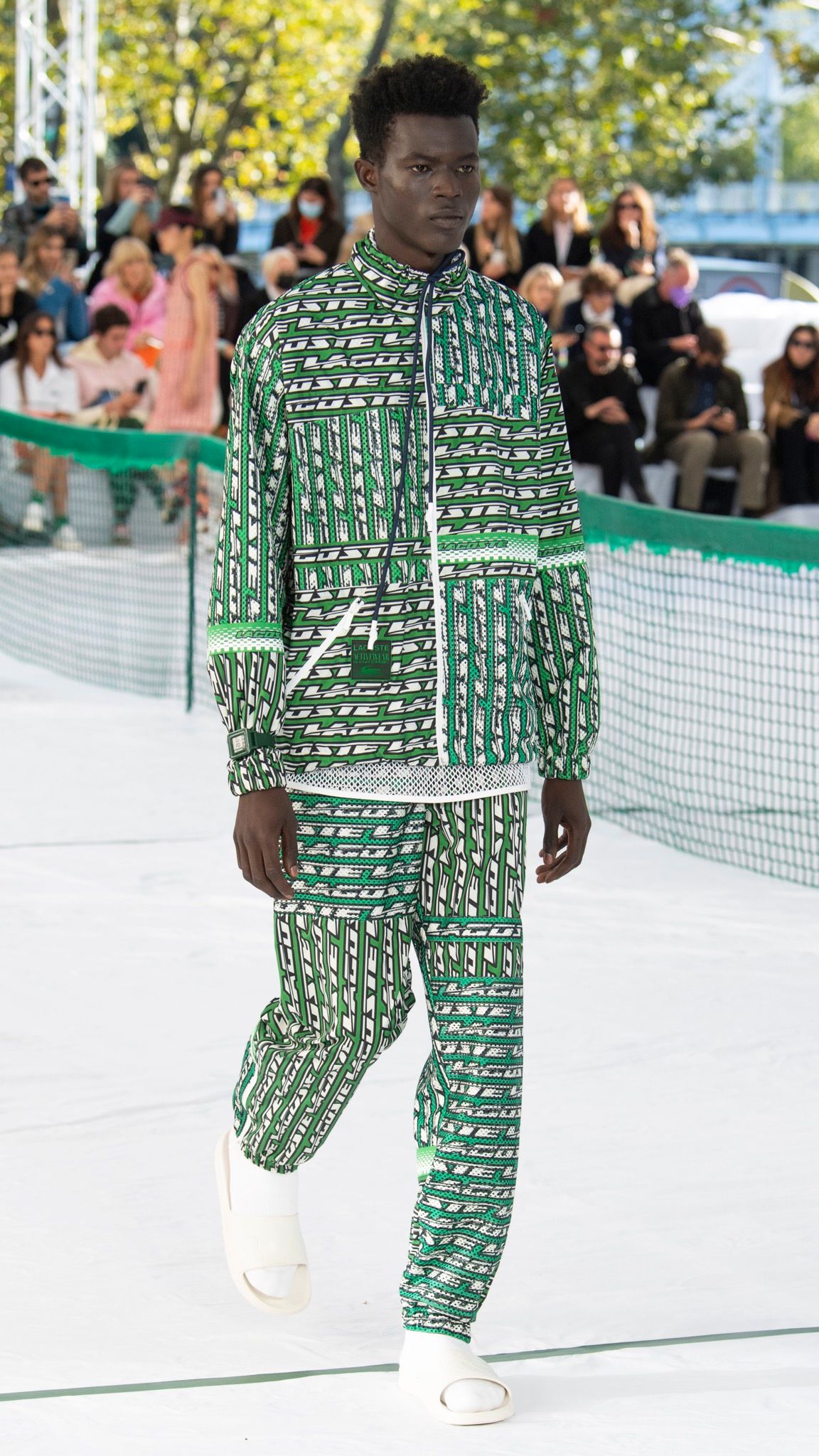
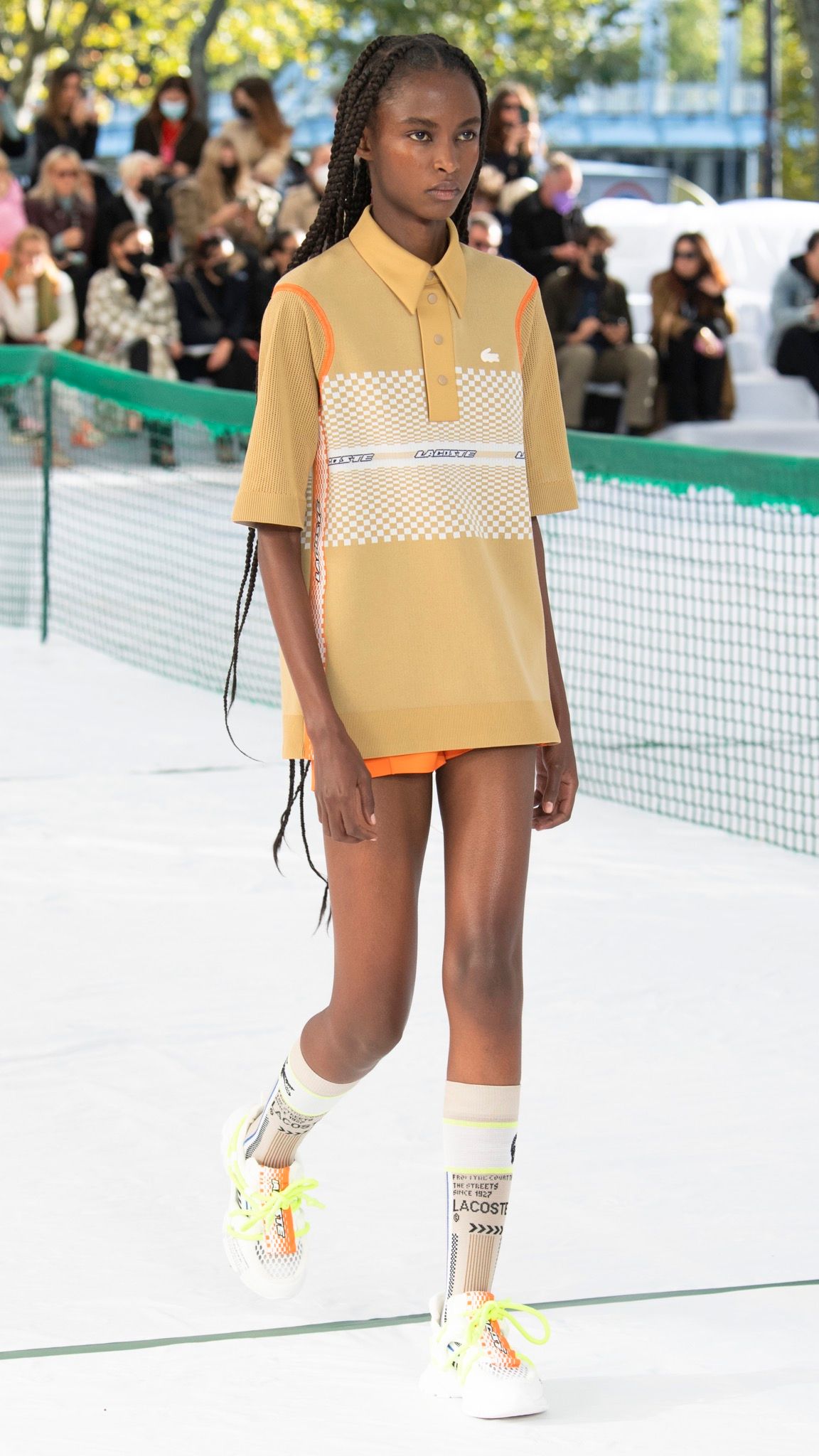
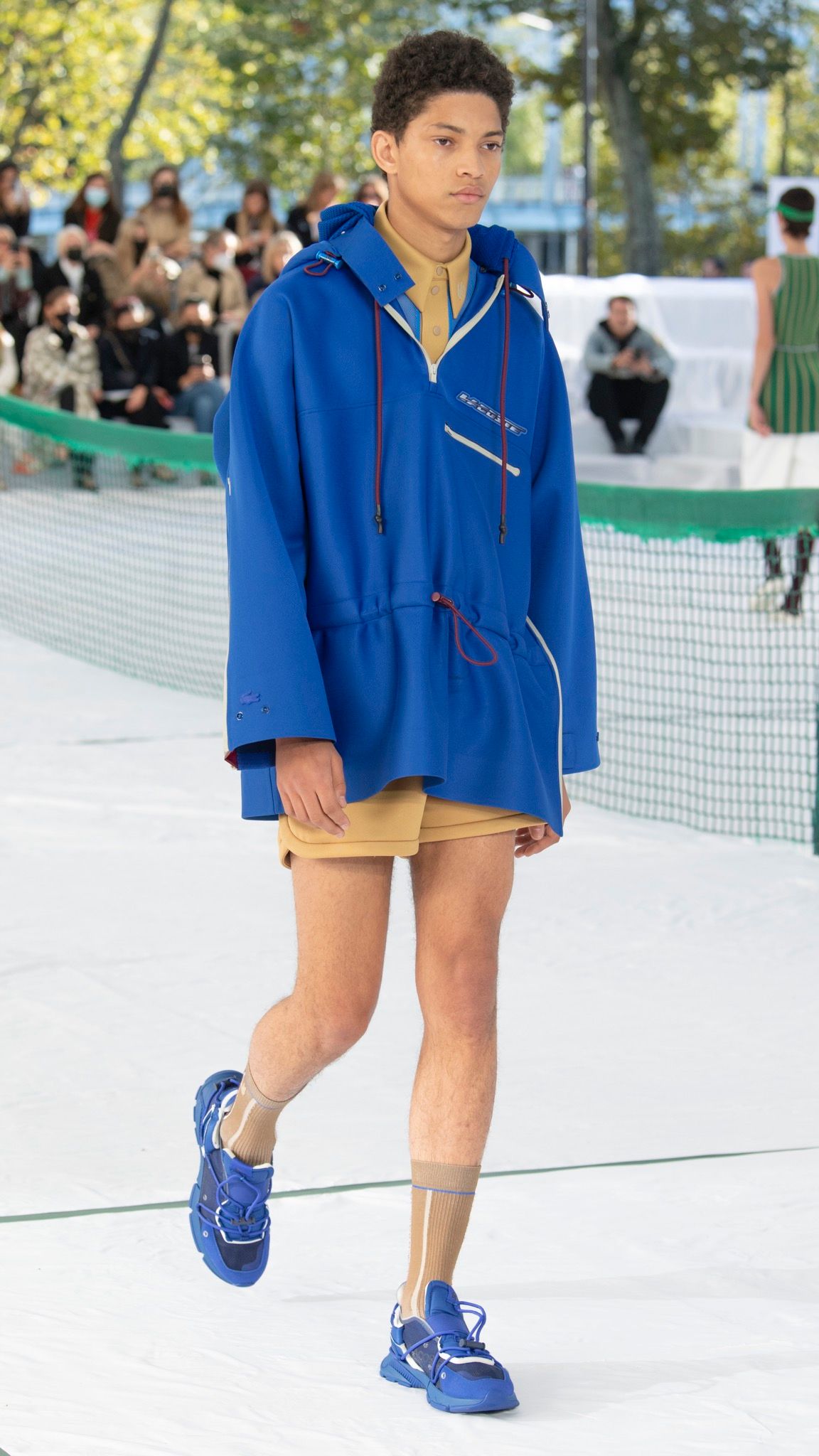
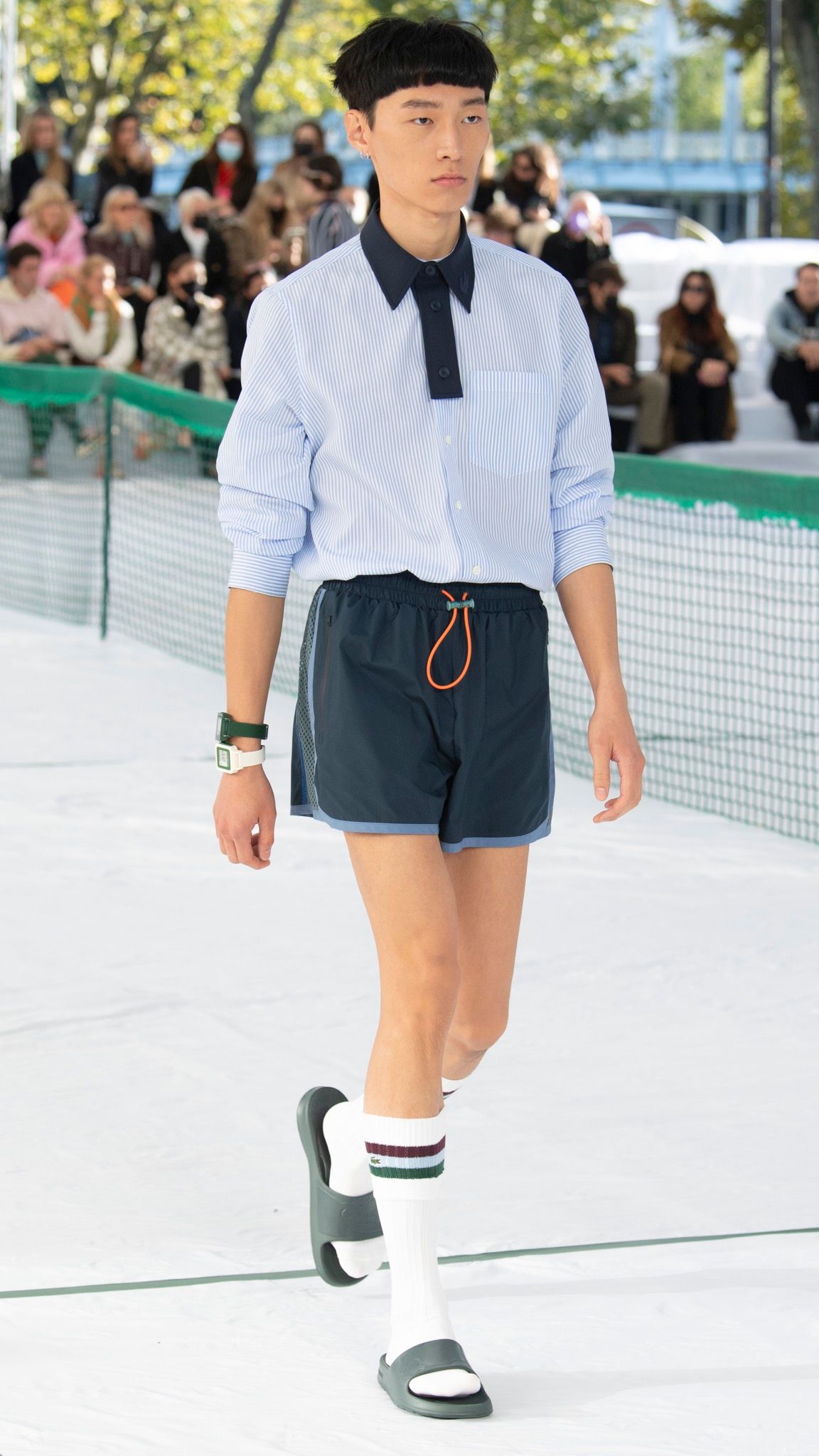
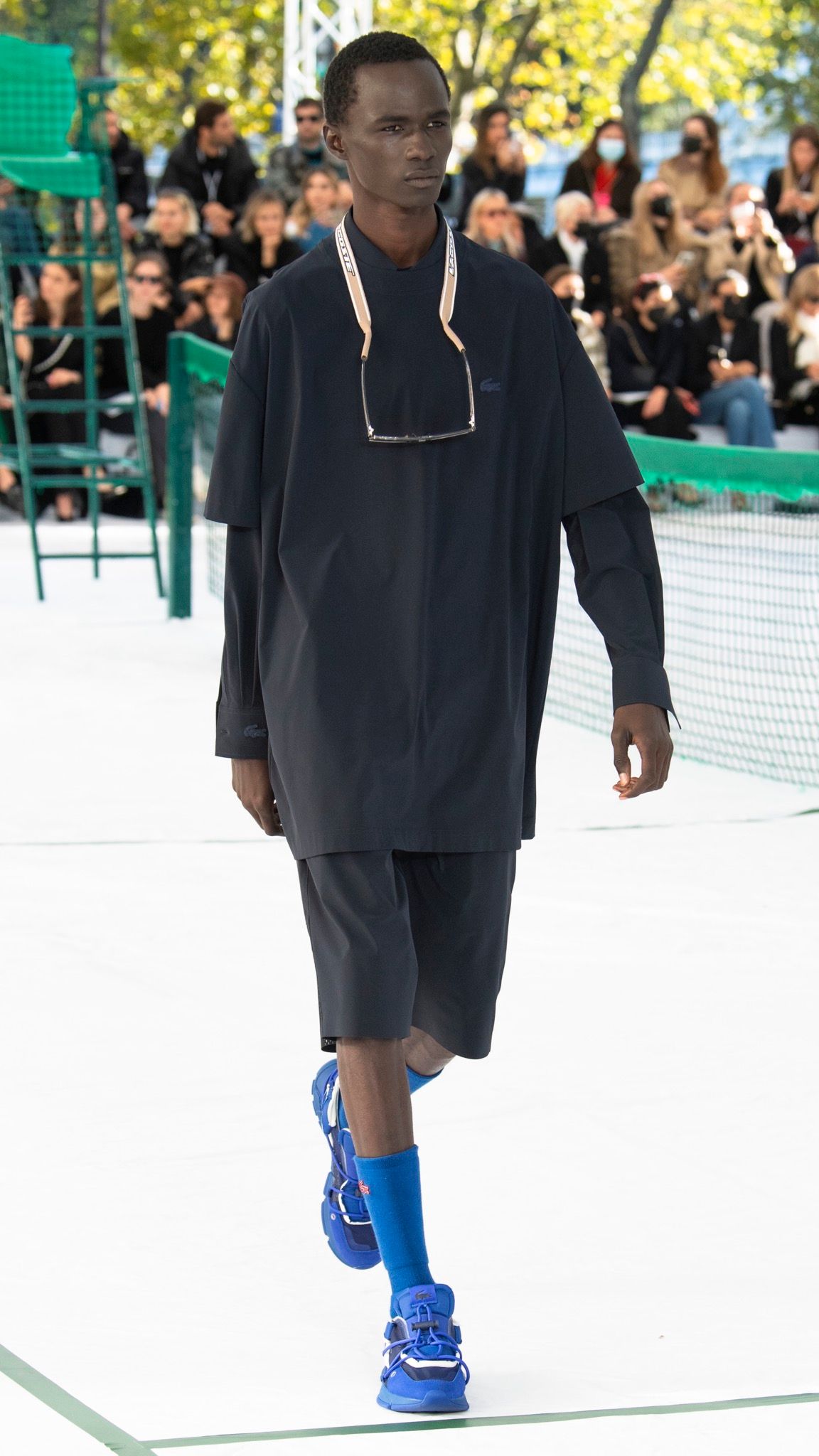
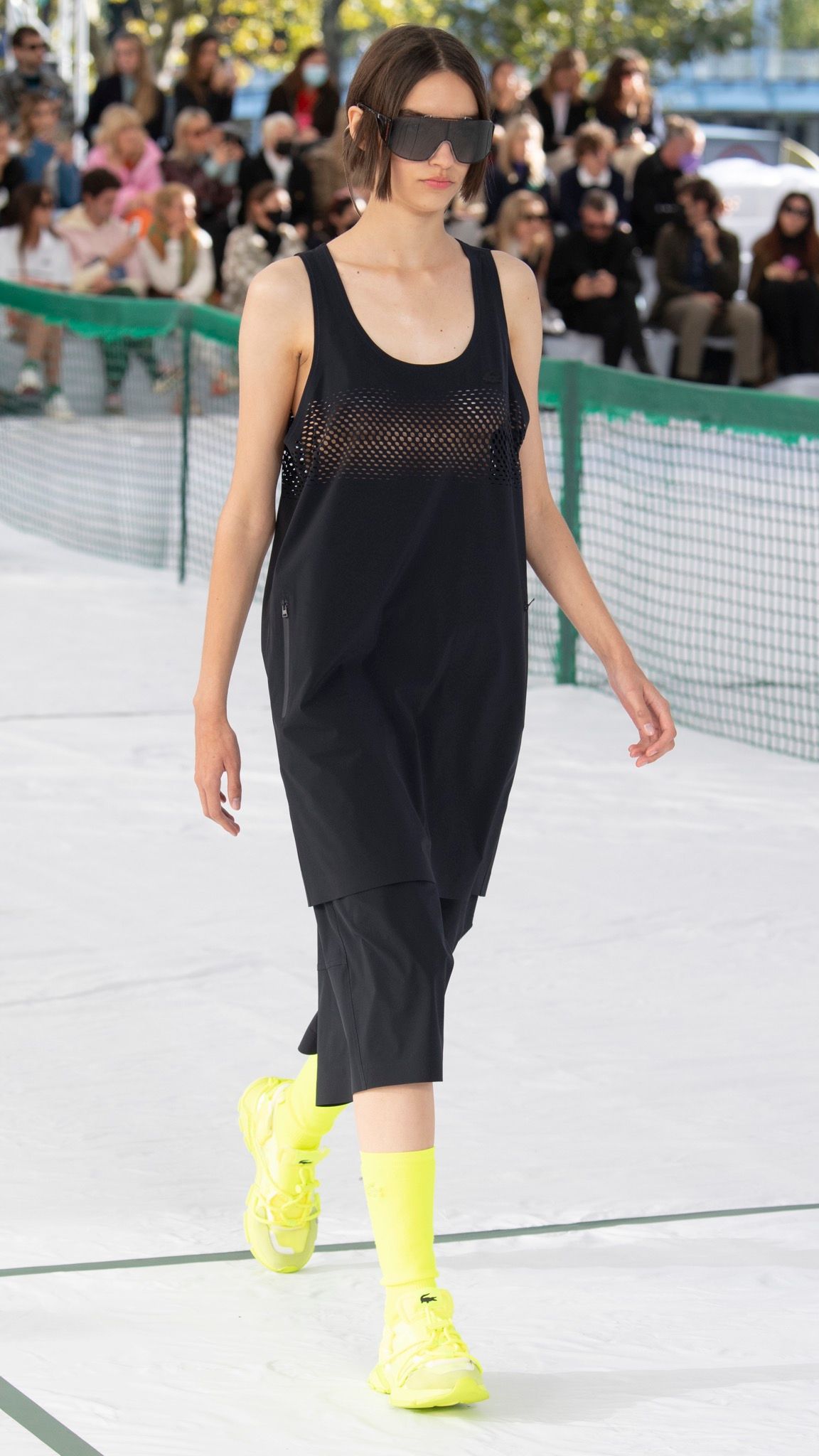
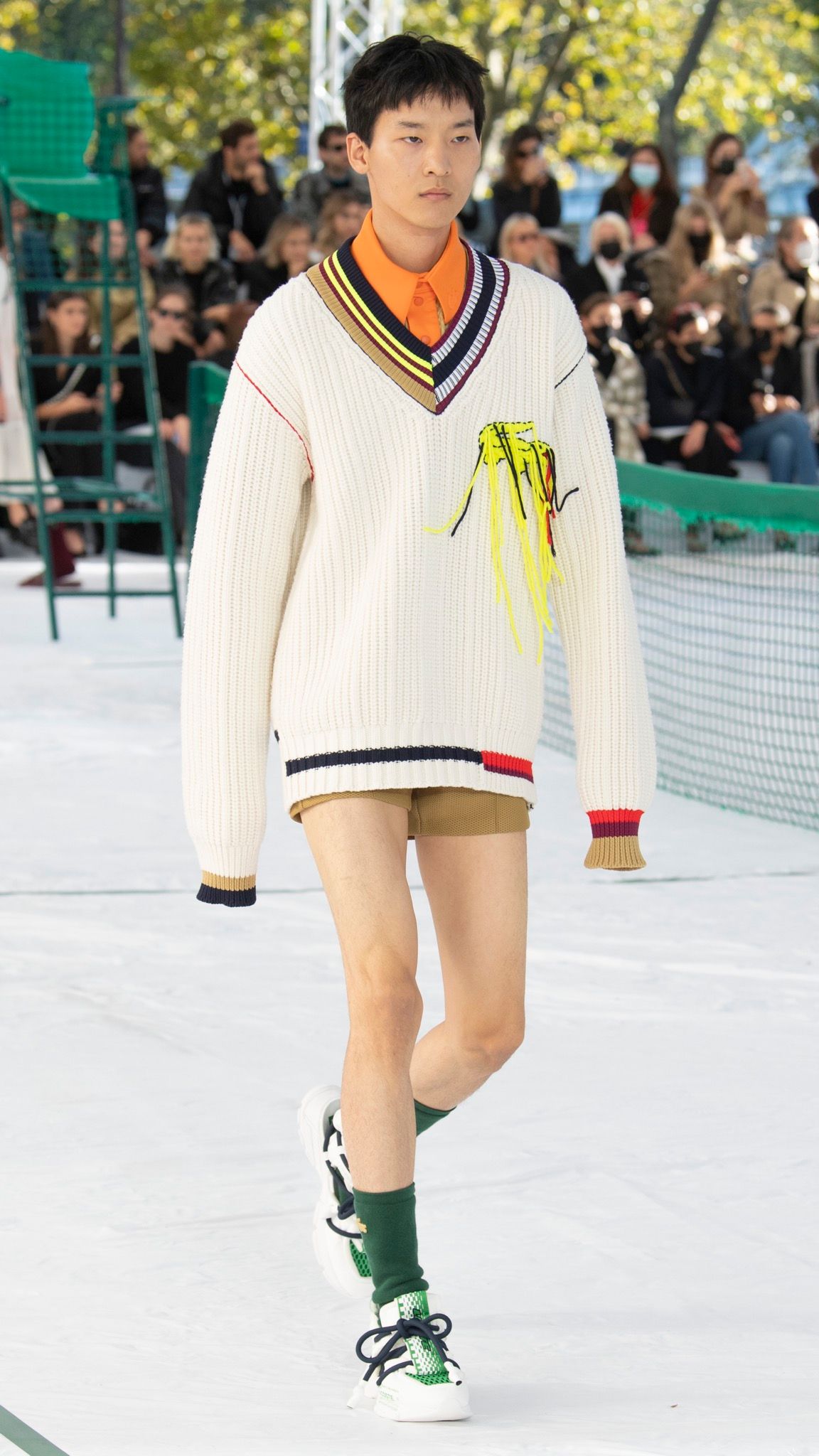
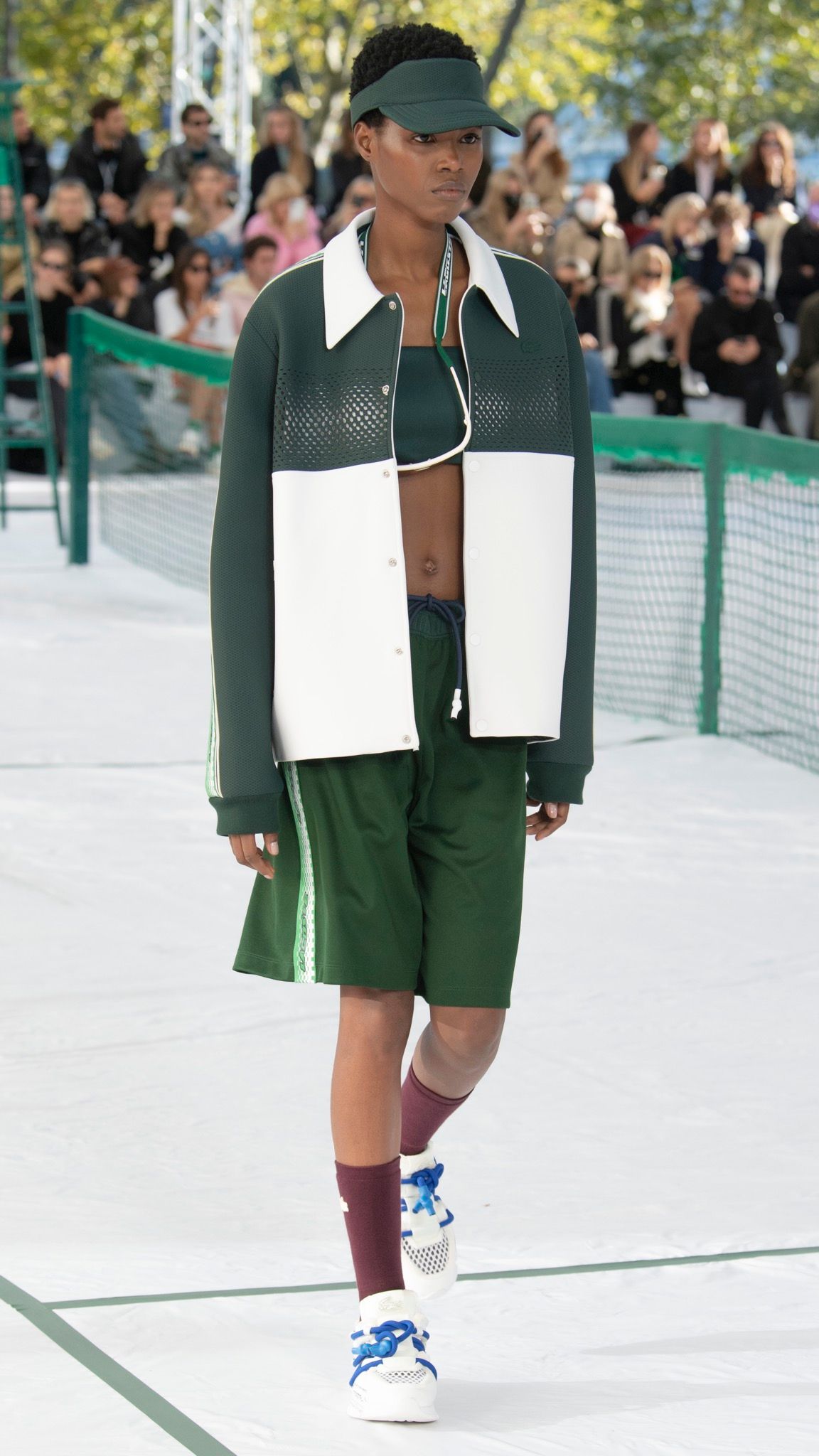
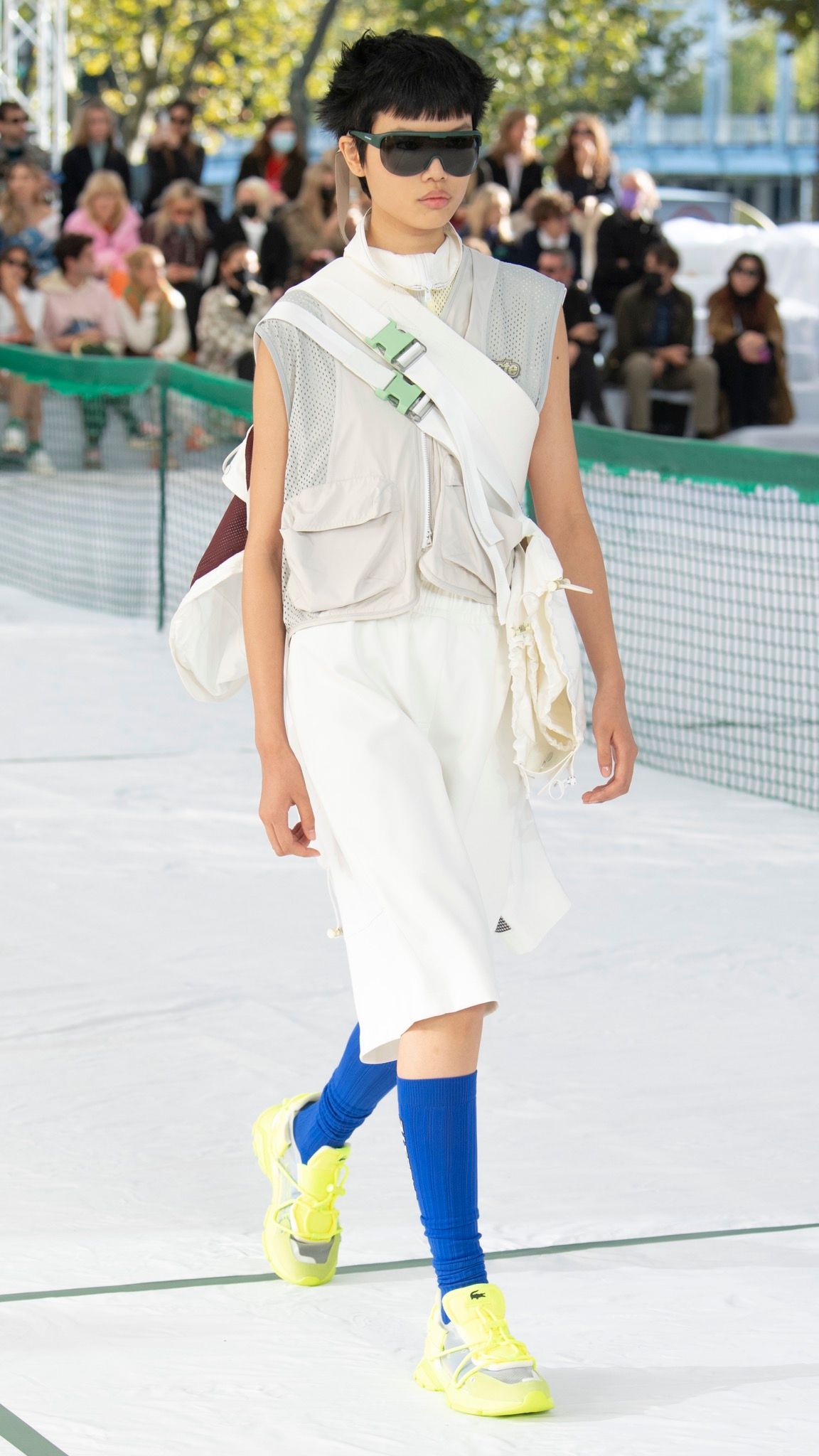
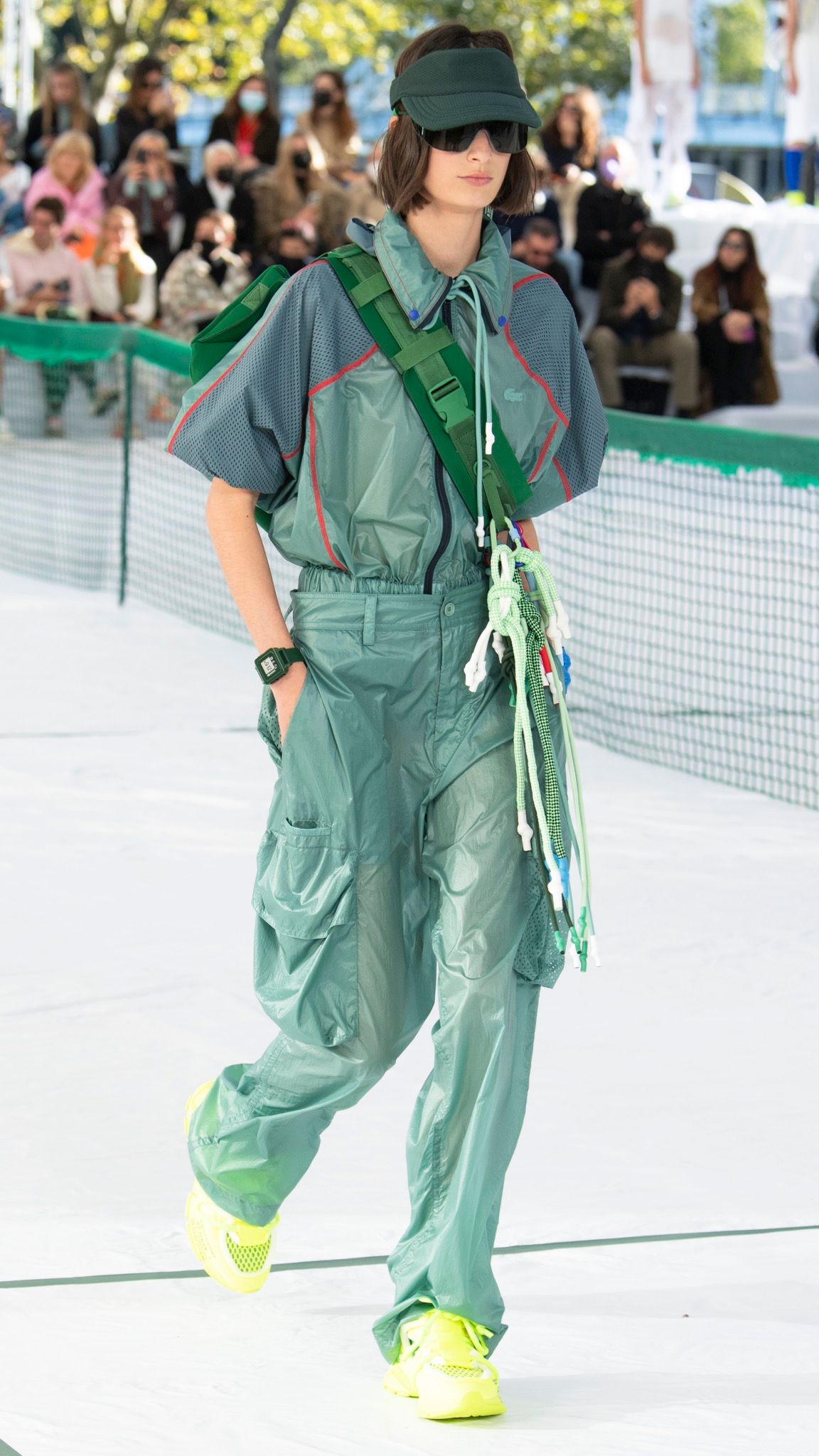
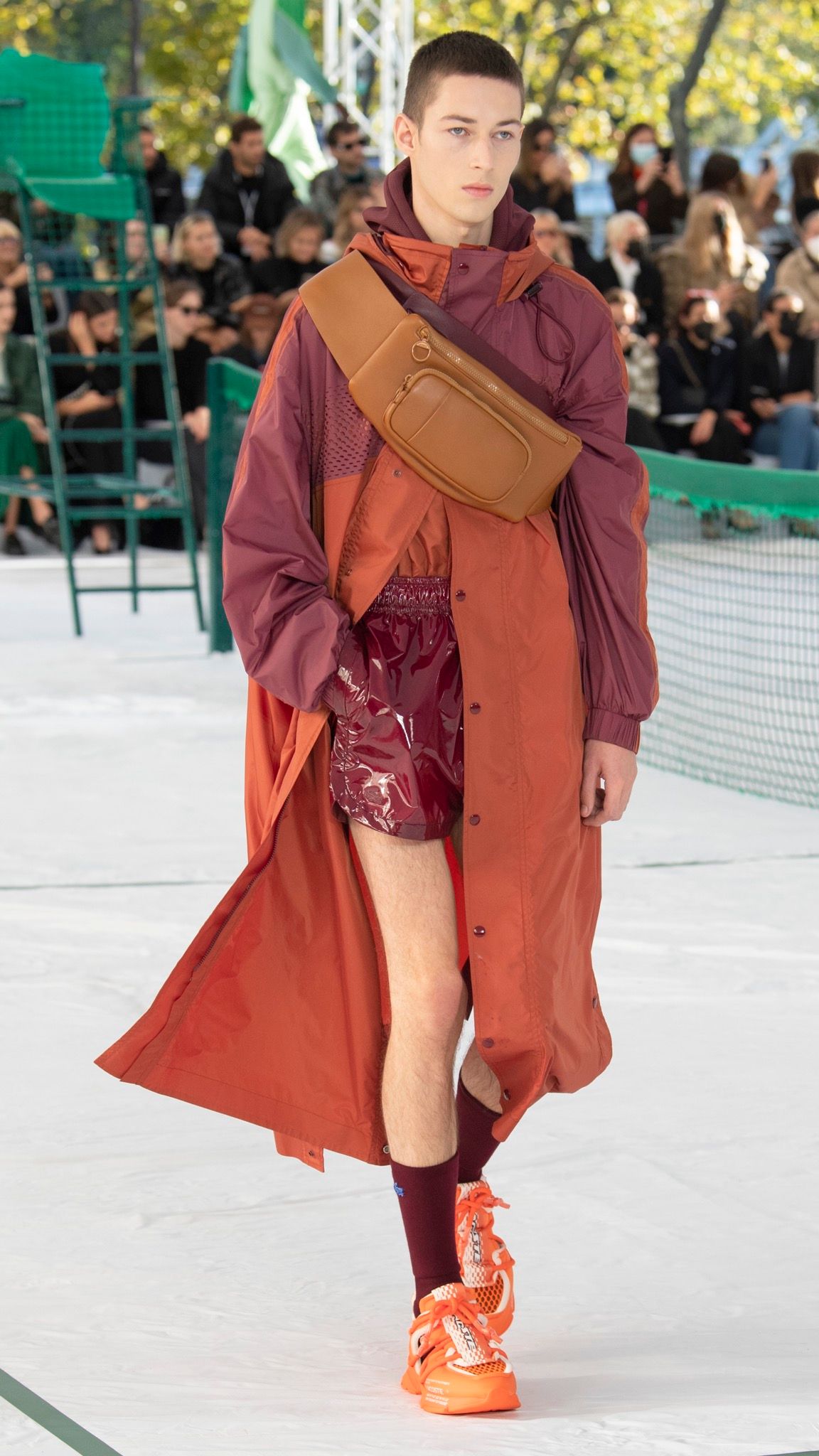
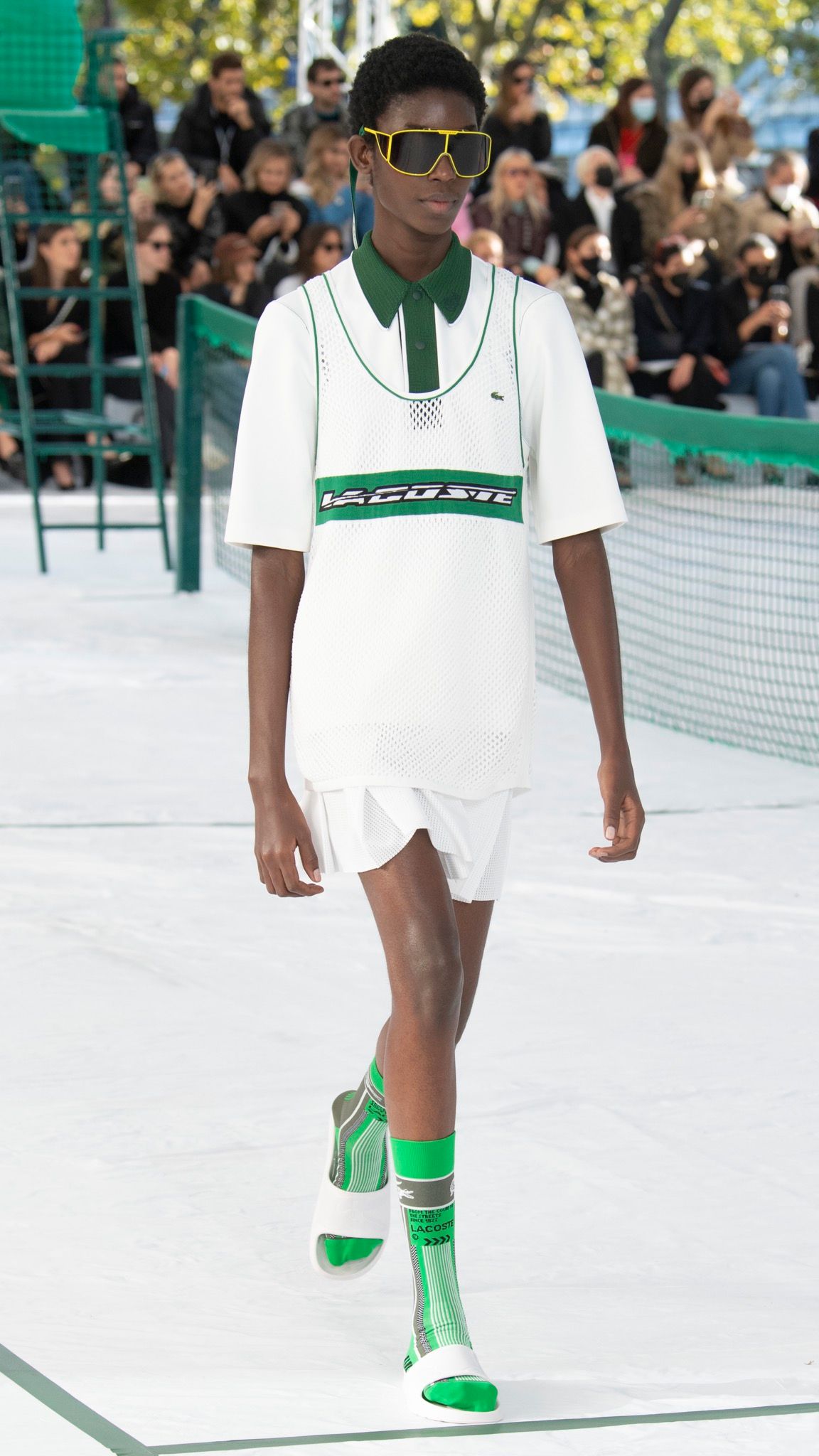
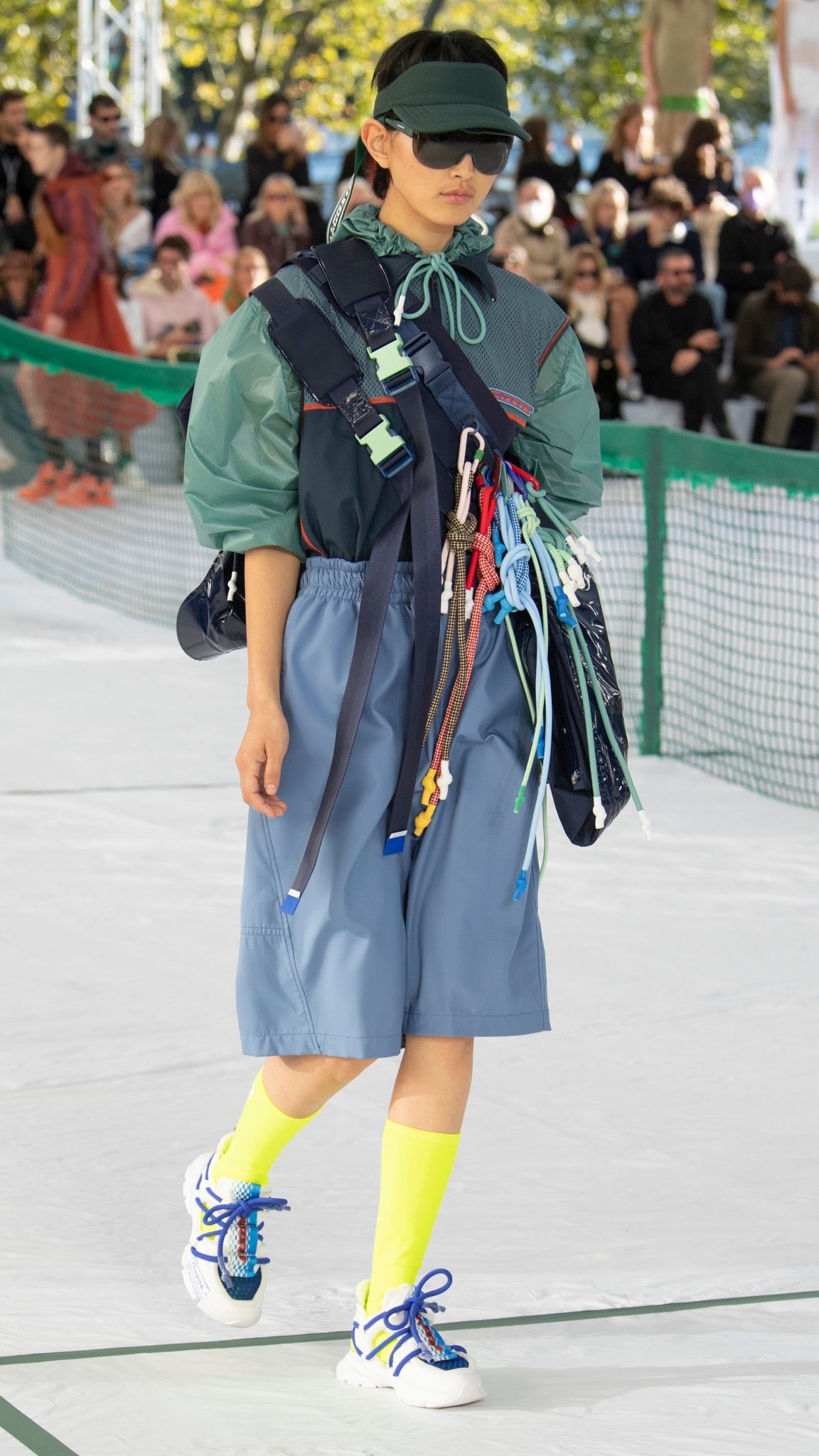
Victoria Camblin: The crocodile is the first logo ever to have appeared on the outside of garments – rather than merely on an inside label. Coming from your previous position at Joseph, which is a very discreet, very un-branded brand, how are you approaching this cult of the logo at Lacoste?
Louise Trotter: In my previous role at Joseph, there was zero branding whatsoever. That was the beauty of it: it’s a kind of secret when you wear Joseph clothing. Coming to Lacoste, which has an incredible icon, my first feeling was that the crocodile had become quite ubiquitous in its usage – and I found myself wanting to take away that ubiquity. You would go into the store and just see this repeat of the crocodile. Obviously on the polo it’s at the chest, across the heart, and the reason for that is that when René created the crocodile, it really had a lot of value – it was a very heartfelt symbol. Once I started to really look into the archive, into the kind of transition of the crocodile through the eras, I discovered something that was very, very handcrafted at the beginning. It was hand-drawn, hand-embroidered, had a lot of manual work inside it. From that point, I started to play with how to give the crocodile a different value in different garments. I wanted to bring back a sense of handcraft, a sense of savoir faire, but also to make it shine, to bring a stronger value back to it. So I’ve been quite inconsistent in my approach to the crocodile; I have allowed the garment to dictate what I eventually end up putting onto it. I’ve also been quite playful, because I really see the crocodile as a kind of pop icon. I wanted it to be treated in a way that raised its iconic status and tapped into this pop cultural attachment.
You’re not treating the crocodile as sacred or fixed – you’ve had the embroidery across the heart unraveling, with the threads pulled and hanging out of the logo itself. What I noted in that is the materiality that gesture gave to the image, and also how that materiality elevated the embroidered logo. Oddly, unraveling or undoing the logo gives it its tactile, and thus luxury quality.
As I said, the crocodile has changed over the eras – it’s been adapted, and you can see its lineage when you look through the archive. When I started working on that with my first season, for Winter 2019, I wanted to express this feeling that the logo was a continuation, the feeling of something unfinished, of a work in progress. That’s quite relevant to me personally, too: my work is always evolving. It’s never a hundred percent finished. The feeling of something being handcrafted also makes it less ubiquitous – and much more personalized. I started off by asking the factory not to finish the yarns so that I could finish them by hand myself when I was doing the fitting. Everything was just left hanging there, so I just started to trim it. It’s a motif that I have continued to translate through three seasons now – it’s become an identifier. I honestly didn’t expect that it would catch on as well as it has. But it was just one of those things that I immediately knew was right when I saw it.
I’m interested in what you said about consistency – specifically about not being consistent. Going back into previous iterations of a logo relates to something I call “the heritage problem”: that typical story of when a new creative director goes to a label with a certain history and the narrative is all about how to he or she is going to pay homage to that lineage and the established brand language without unraveling it – metaphorically, usually – while also finding a way to make the visual language new. The logo is a classic tool in this heritage process: maybe you change the typography and it’s a big deal and you have to explain why it’s on-brand, or maybe you double down on a monogram and cover everything you make with it, or you reboot an archival signet. But no matter the approach, it’s often about zooming into the logo, spotlighting and amplifying it. Your approach seems unique: you pull on the crocodile’s threads. How rebellious is that, actually?
I think it probably is quite rebellious! There was a lot of horrified looks when I was starting to work on the first collection – but if you question something, then you make it stronger. I firmly believe that pushing back on something is how you do that. I’m very attracted to the brand’s rich heritage – it’s beautiful – but when I came to Lacoste I didn’t want to fall into what I consider to be the trap of reproducing things that had been done in the past. That would be too easy, right? You could just take something out of this amazing archive, remake and restyle it, and it would look great for today. But I felt that would be disrespectful to our founder, who was a man who was always looking forward. René Lacoste was an innovator, with his eye firmly on the future. To really respect his values and the house code, I had to look forward. I had to ask myself, “Who would René be today and what would he be doing today?”
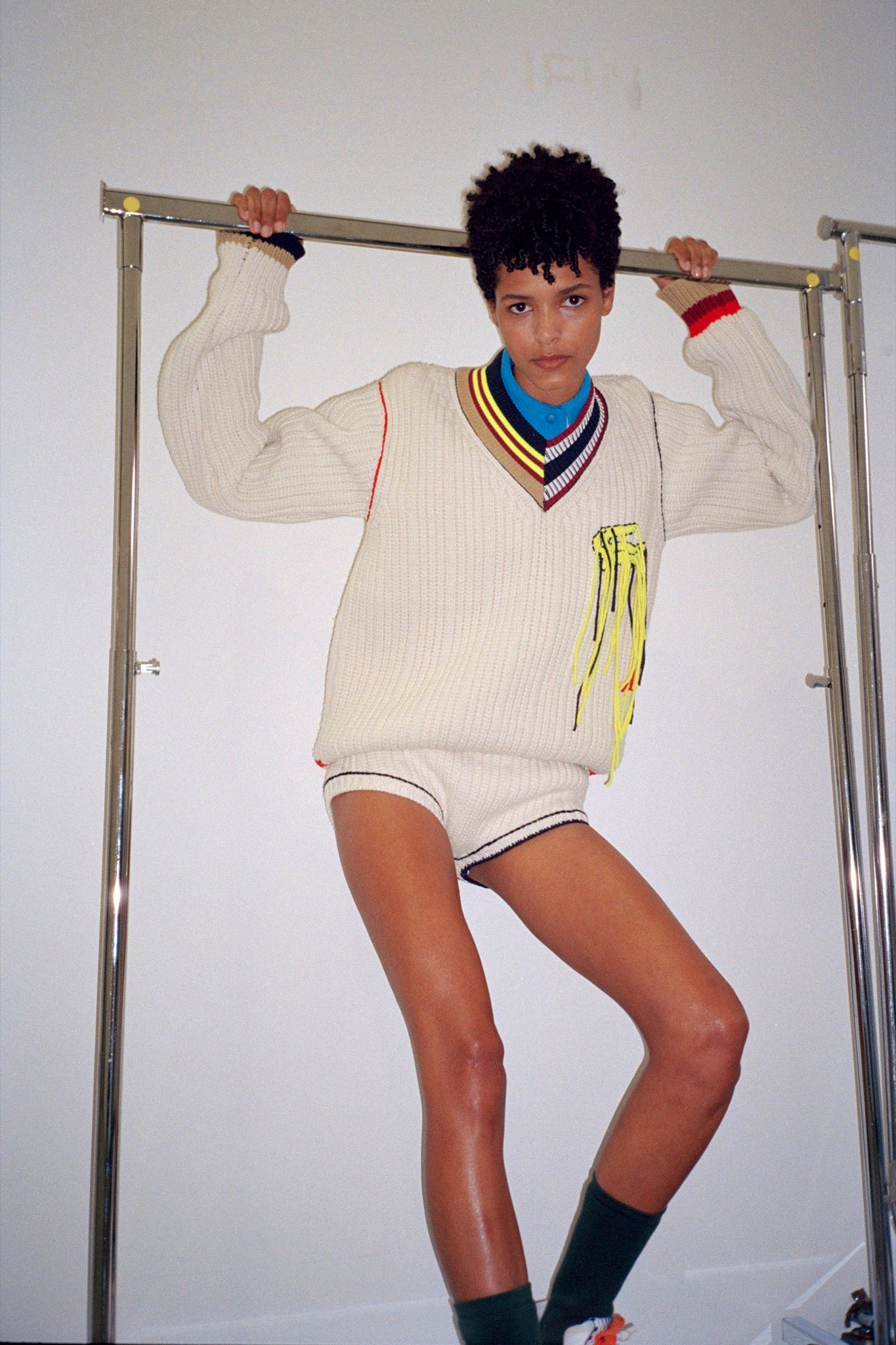
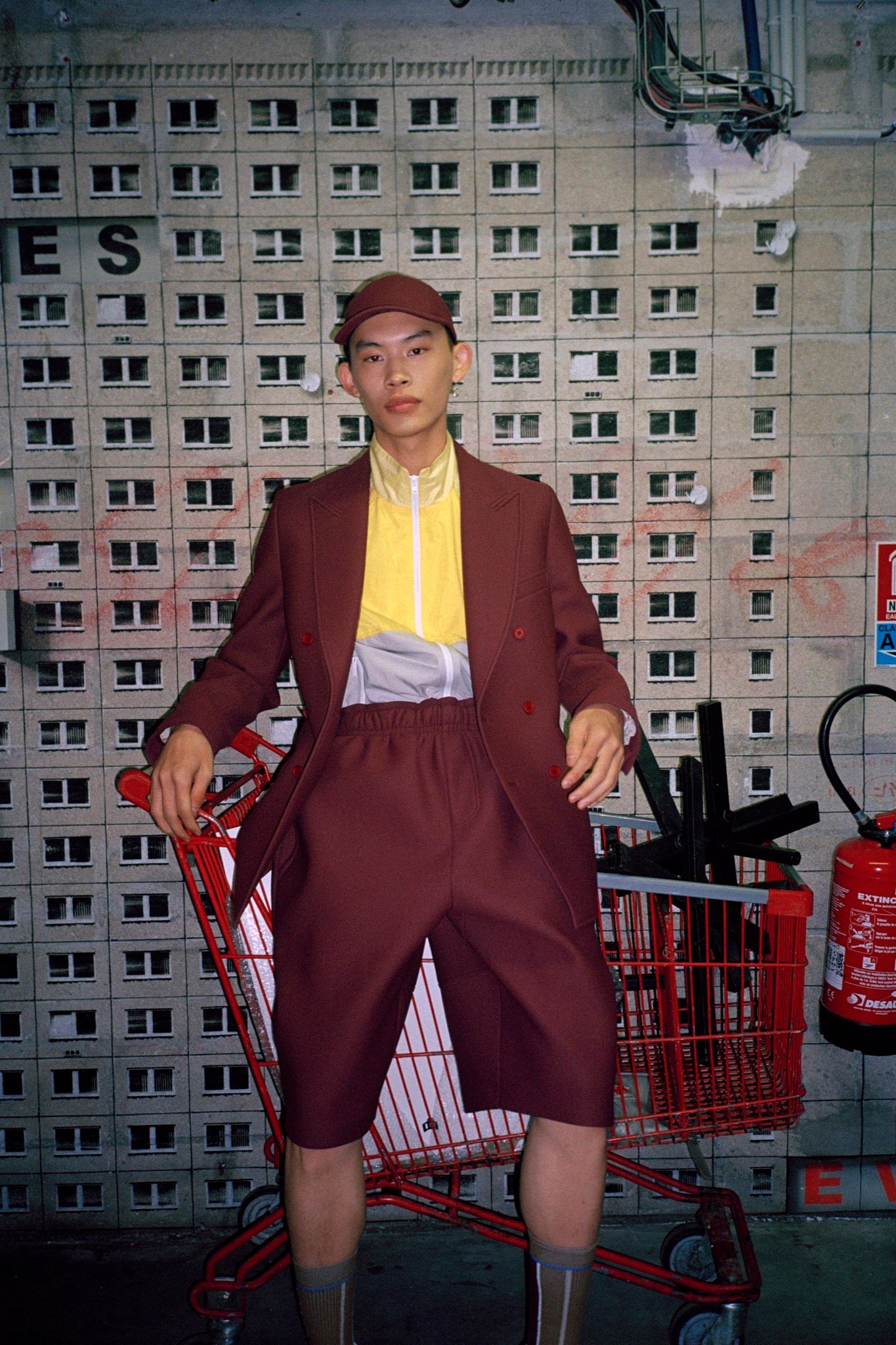
How would you answer that?
René was a champion tennis player, and he was competing in an era where tennis really was an elite sport. There was a certain class that could play tennis. He was quite revolutionary in his approach to tennis because he was so tactical: invented the polo shirt because he wanted to increase his movement. So instead of wearing what was at that time a sartorial shirt and trouser, he cut off the sleeves and created the piqué. He was the first person to wrap his tennis racket to prevent tennis elbow. He invented the first metal tennis racket, at a time when they were playing with wooden ones. He invented a tennis ball machine that allowed you to practice. He designed golf clubs because his wife was a champion golf player – and we have a rich history in golf as well as tennis. He dedicated his life to improvement, looking forward both on the game and in life.
Does sports thinking come into your work? Say, values around competition, even around “winning”?
I do use the sporting values such as tenacity and fair play, community and joy, in the work that I do for Lacoste. We obviously take our tennis seriously; we sponsor great athletes and great events, but more important are the values of sport – and bringing them into everyday life. When you start to really study tennis, you realize it really is a game of life I find it very interesting to take the psychology of being a winning athlete into the work that I do for the brand, and I’ve learned a huge amount being in this role – on a personal level as well as a professional one. You start to understand the marriage of physical and mental. You also learn that the difference between winning and losing is really marginal.
Earlier this year, I interviewed Bruno Sialelli, who had then just joined Lanvin as creative director. He was wearing a Lacoste shirt on our Zoom call, and I asked him about it. He said the reason he likes it is that it’s sort of a floating signifier – I’m paraphrasing – meaning that if he wore it in his old neighborhood in Marseille the kids wouldn’t think he was a square, and if he wore it to a golf club finance guys wouldn’t think he was a hooligan.
I have a great friend who is a DJ in Ibiza, and he says exactly the same thing: “I love Lacoste because I can have tea with my grandmother at four o’clock in the afternoon and then I can go and play in a club afterwards in the same polo shirt.” I often say it’s for the taxi driver and the president – it has that scope – even though it comes from heritage. I think it is something that inspires, rather than a symbol that people aspire to.
René Lacoste obviously had a very big personality, as does the crocodile – a kind of charisma, a character. There are very few examples of this in culture – Joe Camel doesn’t quite approach it.
Oh, we often talk about that at Lacoste. There is a lot of humor attached to the crocodile – it’s laughing, in fact it’s laughing so much that there’s almost a tear in its eye. The crocodile is on the heart, having fun and almost crying with so much joy.
There’s a pathos to it, too, no? There’s a sort of longing, like maybe it’s lonely there on the shirt or yearns for something more. The original polo shirt was invented to be worn in action, so that is the fundamental pragmatism to the whole thing, but there’s also some desire and even excess in that DNA. I’m thinking of the story of how René Lacoste got his crocodile association because he wanted a crocodile bag, which is an extravagant object, as a prize for winning a tournament. He didn’t win, and he didn’t get the bag, but somehow that desire is distilled in this extremely pragmatic polo shirt. I find to be interesting tension – and it goes beyond the supposed duality between high end fashion and sportswear. There’s something emotional there.
Have you seen the way the guy dressed? He was a good-looking guy who had a lot of style and I think a lot of charisma, and while he definitely wanted to improve his game and movement, there was a lot of style involved in the way he saw and made things. I mean, he’s famous for saying that if you don’t win with style, then it’s not really worth winning. Had he won the game, he would have had a crocodile briefcase, but it’s not just a testament to the fact that he was a man of style. I think the crocodile really has to do with tenacity, with the fact that he never gave up, even if he lost.
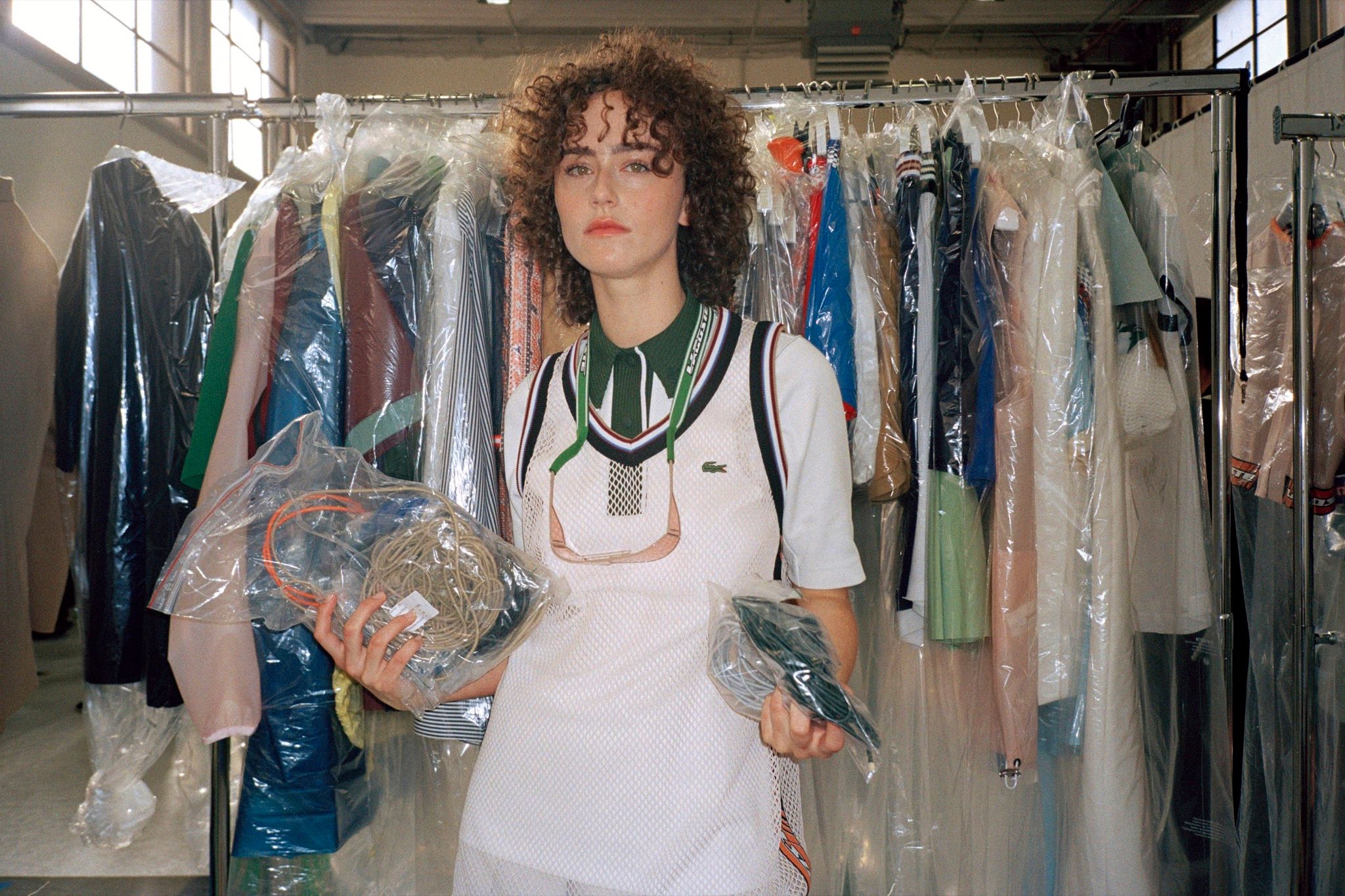
So it’s like winning and losing: there is also only a marginal difference between getting your crocodile bag and not getting it! Your earlier collections for Lacoste actually transposed the crocodile symbolism back into leather, in shoes and accessories. The SS22 collection seems decidedly sportier. It seems to double down on functionality more than symbolism – focusing on the properties, rather than the form or significance of the materials. How has your thinking about the brand evolved in the years since you joined?
That’s very true – if you look at the previous collections, you can see that I was still very much looking into the archive, reworking the iconic heritage signatures of the brand. With this Spring/Summer collection, the icons are very much there, in the polo shirt and the track suits, but I really took a break from the archive and moved into something that is much more about what performance means today – and what the archive will look like tomorrow. Lacoste started with a functional piece of clothing that you wore to play tennis, which evolved into something people wear in the everyday. That movement between the game and life was really what I wanted to express with this collection.
The future is of course looking very technical, in terms of fabrics and production methods. Is there anything you’ve discovered or are particularly excited about technologically as you’ve begun to look more forward?
I’m always working with how I can reinterpret the idea of jersey, which is key. We’ve had some interesting advancement technologically in the way that fabrics are put together or bonded or the way that they’re finished, and I’ve brought that in. There’s been a lot of progress in laser work, which is quite challenging to do on certain fabrics, allowing me not to bond things so that a garment can be super light or totally seamless. These fabric details and developments are a big part of that collection. People love the brand because there is a natural quality, so when I work on bringing in the technology and the performance, I still try to keep that hand feel. The question is, “How can I make this look and feel like a cotton even though it gives me all of the performance elements?”
Something that has come up on a number of Zoom interviews with designers is how our ideas of functionality have evolved, and frankly multiplied, alongside Covid-19. I’ve had conversations about how we no longer need weekend bags or commuter briefcases, because short trips are off limits and people are working remotely. How have the last couple years changed the way you’re thinking about function, through the type of needs you’re responding to?
It’s had a massive impact on me. I’ve always wanted to create clothes that function – clothes are to be worn – and as I get older, I have less and less tolerance for clothes that don’t. We all talk so much about sustainability, but the most sustainable thing that we can do is design clothes that can be worn every day and that can last the test of time. Before Covid, I was getting into cars more often, or taking public transport. Now I ride my bike into work every single day, or I walk. I don’t want a coat that’s scraping on the ground. I want clothes that have stretch that I can move and can be really comfortable, but at the same time look great. I’m demanding more and more from my clothes. I got obsessed by things had to be washable. We were all coming home and removing our clothes as soon as we got through the door. Suddenly nothing could be dry cleaned anymore. I also think we’ve become more aware of the fact that to look good, we need to feel good as well. I mean, there was a time when looking good was, like, standing still and smoking a cigarette and drinking red wine. But today, looking good is also about feeling good and having an active life and looking after yourself and being much more aware of how you are feeling – physically as well as mentally. So a lot of those things are quite intentionally addressed in the new designs for Lacoste – in the jackets or the coats designed to button up across the body so that you can cycle in them, but without getting too geeky. Because we also don’t want clothes to be geeky, right? I work on the sports side as well, which is really about looking at what we can put into garments to support athletes. But we all sweat, we all move, we all want to stay warm and dry or keep cool. It’s only a matter of time before you start to question, “Well, why can’t I bring that into the everyday?”
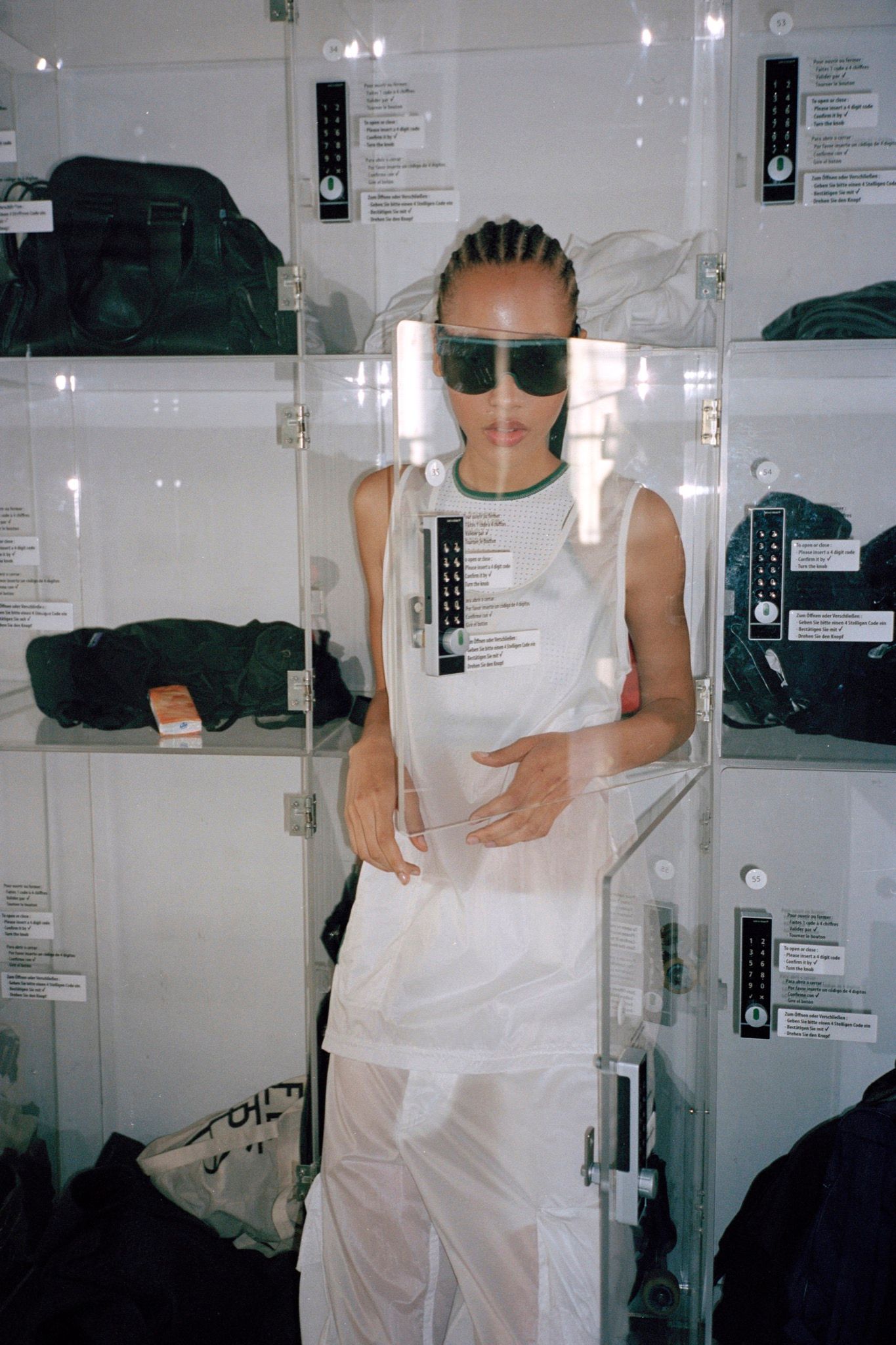
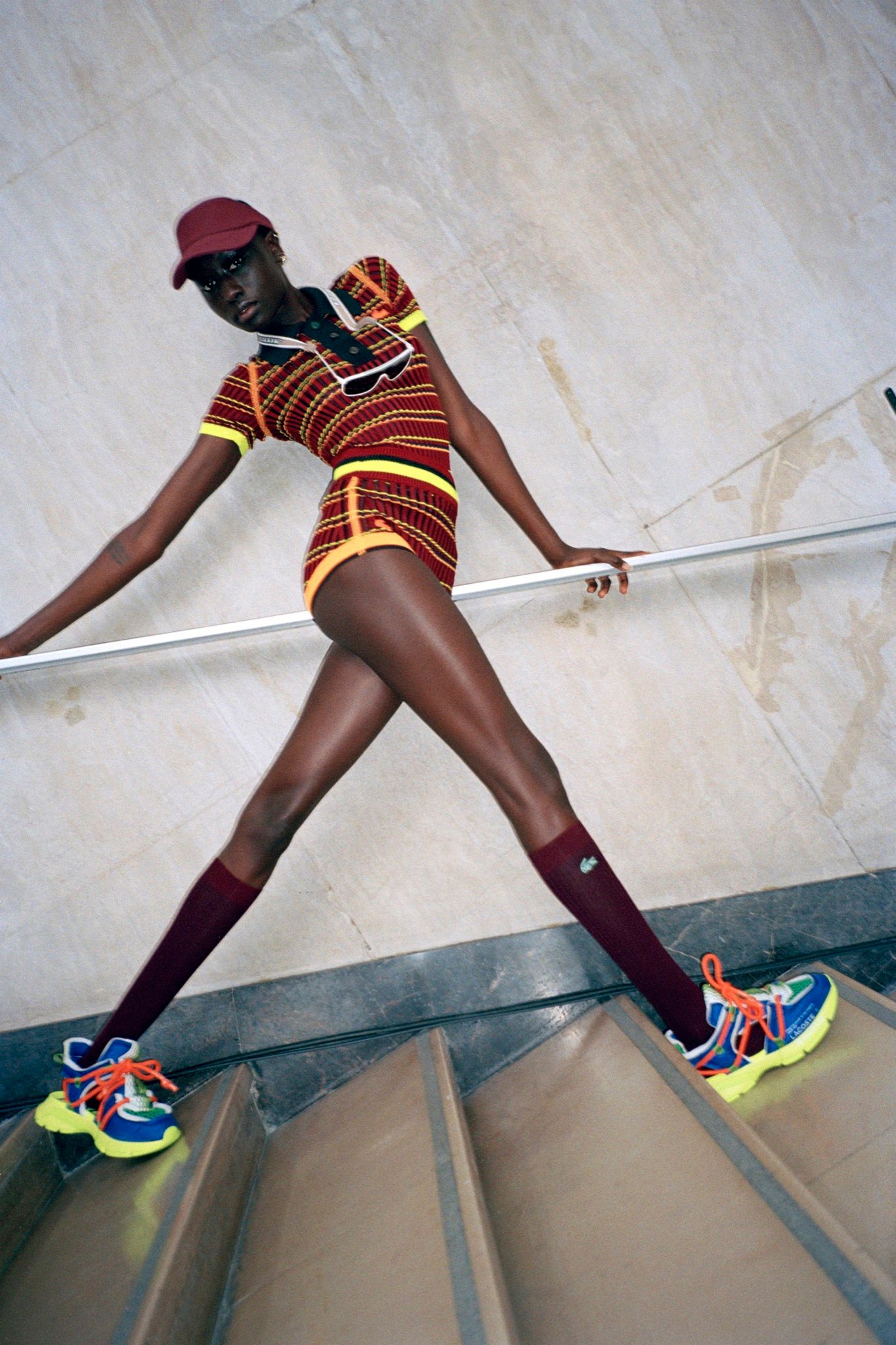
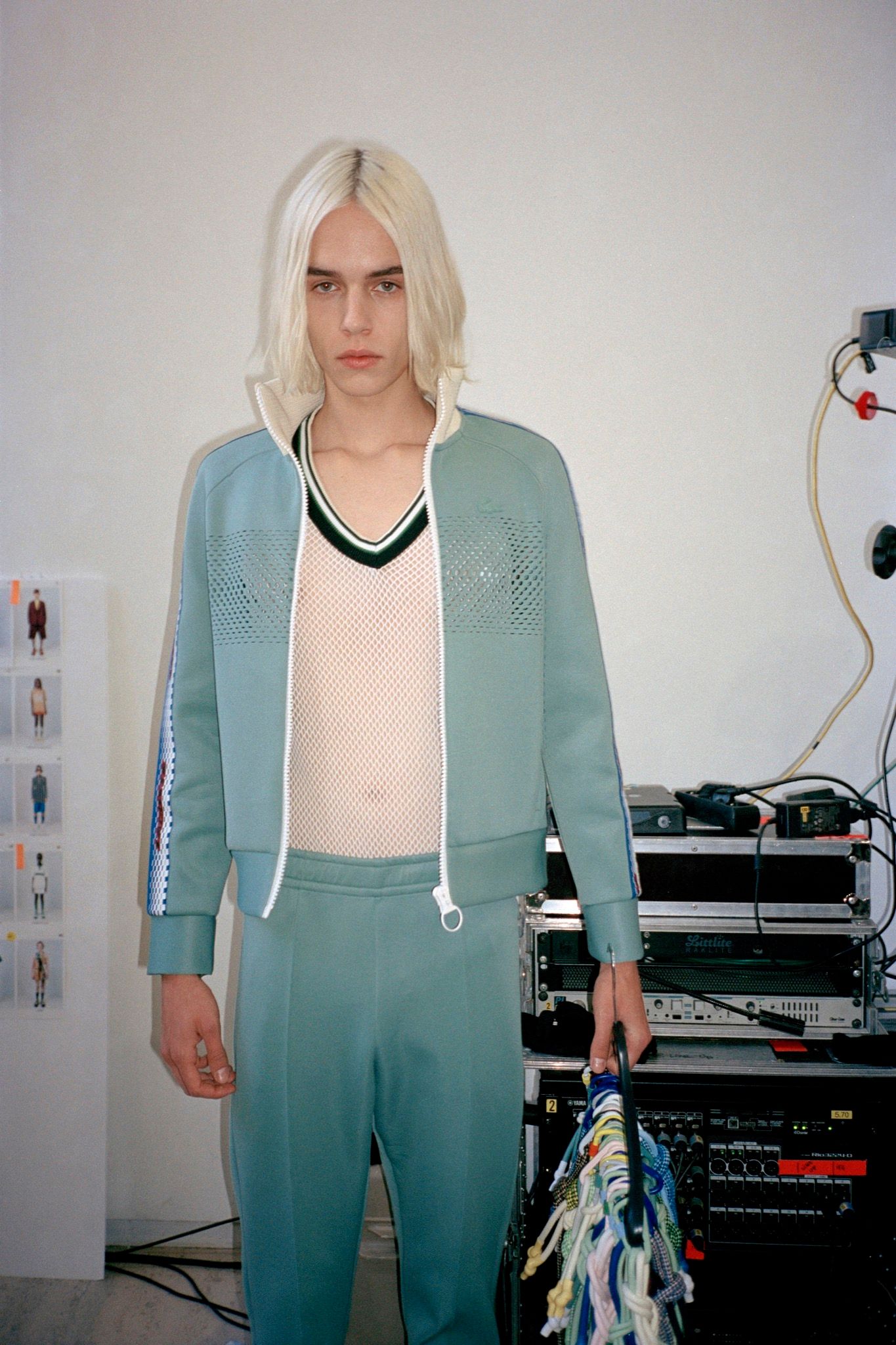
It’s not my favorite vocabulary, the way we talk about “performance” and “luxury,” or about “elevating” certain product types. The terms and distinctions they represent seem especially useless in the context of Lacoste, which as you say already has this elite DNA simply because it comes out of tennis. So how do you view luxury now? I feel like it’s actually less about material form and function and more about … time.
Honestly I think luxury today is time, and I think we’re all strapped for that. That’s the scarcity. And I think there are very few brands today that I would truly class as being luxury in that sense. We really take the time to make our polos in a certain way, and we do that to make sure that our design will stand the test of time. We’ve been quietly looking at its labeling, its construction, how it washes, how we can make it better through the length of the yarn and the sustainability and durability of the manufacturing. Luxury today means objects or clothing that transcend time, that transcend a particular moment in fashion. It is expressed in things that can live with you throughout your life, or through a certain chapter. Luxury is expressed in how you utilize your time, how you invest time – as a brand, that investment is in the garments you make and how you ensure that those garments will last.
If luxury is about time, then you have sort of a creative stack in which durability – so functionality – then sustainability, then luxury become one and the same object.
The pieces that speak to luxury are the ones that I keep and cherish. Staying in my wardrobe – that’s a form of luxury, honestly.
This idea of cherishing brings it back to the crocodile and that symbolism being placed on the heart. That gesture created this ubiquitous thing, but there is also something very personal about it. There seems to be a renewed desire for customization or personalization in garments today. You have labels moving from luxury streetwear now doing couture. Of course, the scale of Lacoste is greater in terms of production that of other niche or even heritage labels, but there does seem to be an impulse to make it feel individualized. Is that something you are thinking about, or see to be a part of the Lacoste legacy?
A lot has changed in luxury due to what younger generations are demanding from brands. Virgil had a lot to do with that, in how he challenged what luxury labels can mean to the next generation, and what designers themselves can represent for them. This idea that you are either one or the other – luxury or streetwear – has expired. You can be niche and quite small while also being “mass.” But remember, luxury brands have always been “both” – they just used to achieve this through commodity products, in beauty and fragrance. Now, it’s less about perfume and lipstick, and more about products that people can buy at a certain price point but still participate within the core brand. Lacoste is a heritage brand, and we offer a luxury product produced en masse: our polo shirt. But it’s not a luxury created through scarcity or an inaccessible price point – it’s luxury because it’s an icon, because it was the first. And it still has a huge value attached to it because of that.
In the office we were re-reading an interview with Virgil from a few years ago, and one thing that came up was the question of the virtues of being “first.” What is the value of that?
I wouldn’t dream of thinking that I could answer that question.
Maybe you already did, when you said that the difference between winning and losing is so marginal that it’s almost up to chance whether you’re first or not.
I think we solved it.
Credits
- Interview: Victoria Camblin
